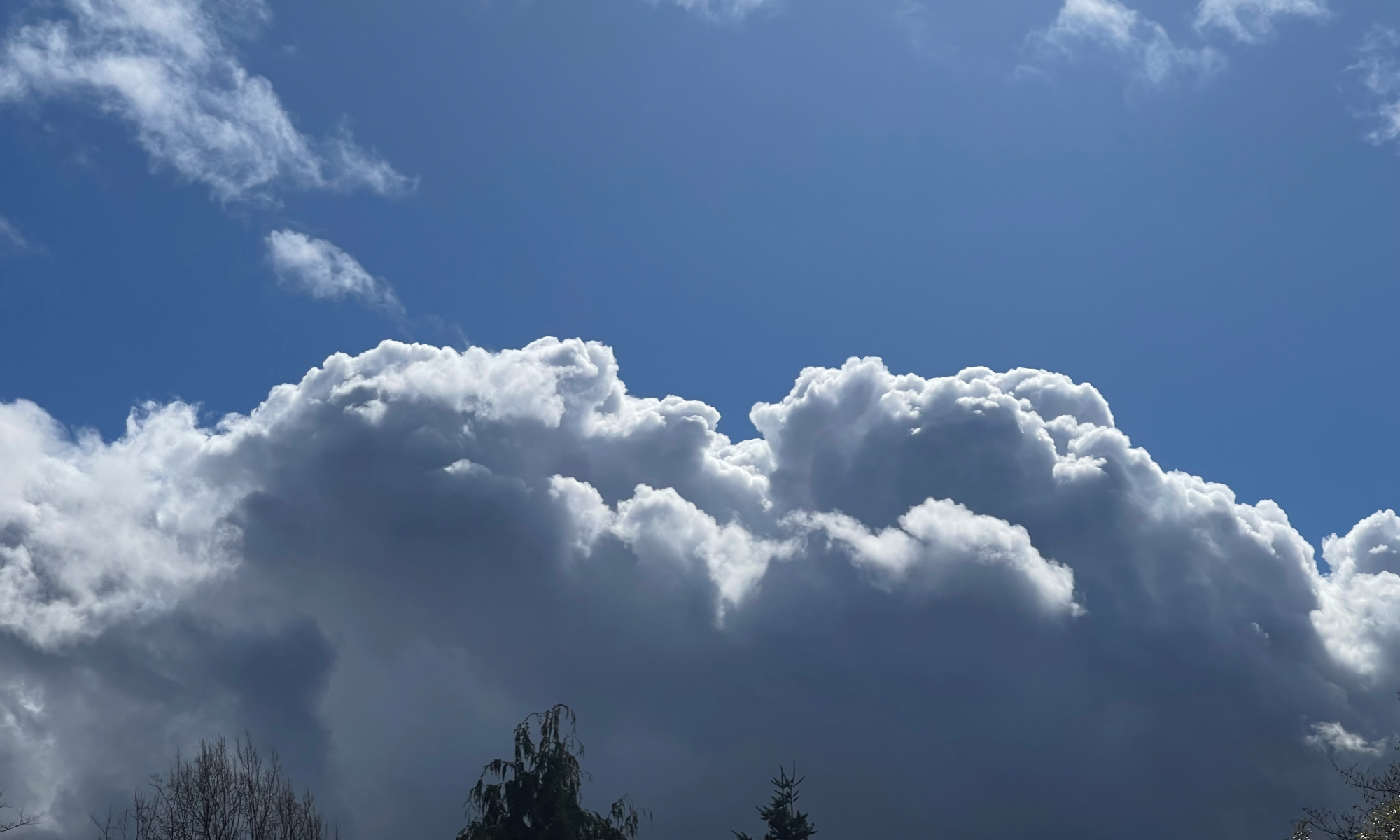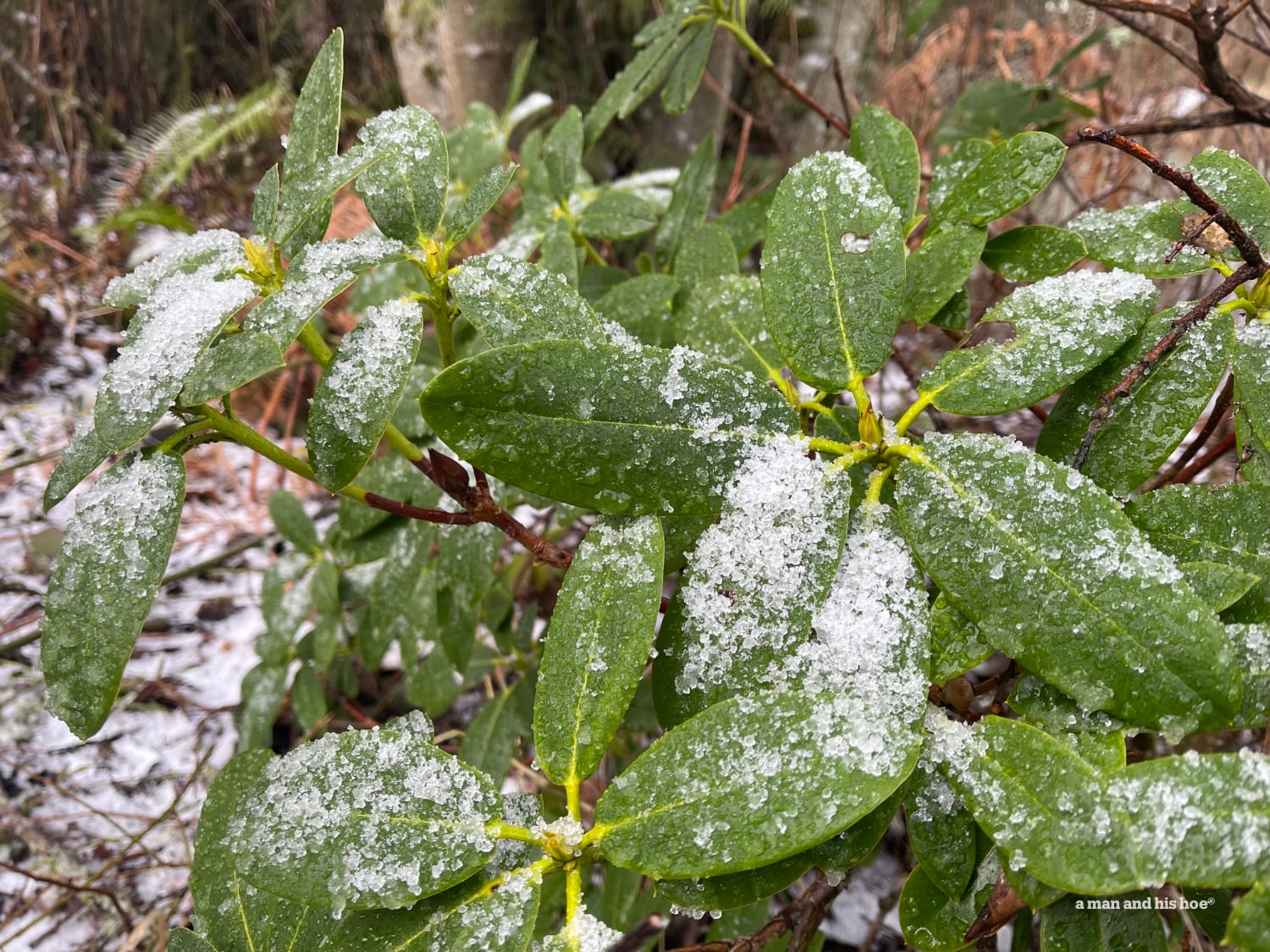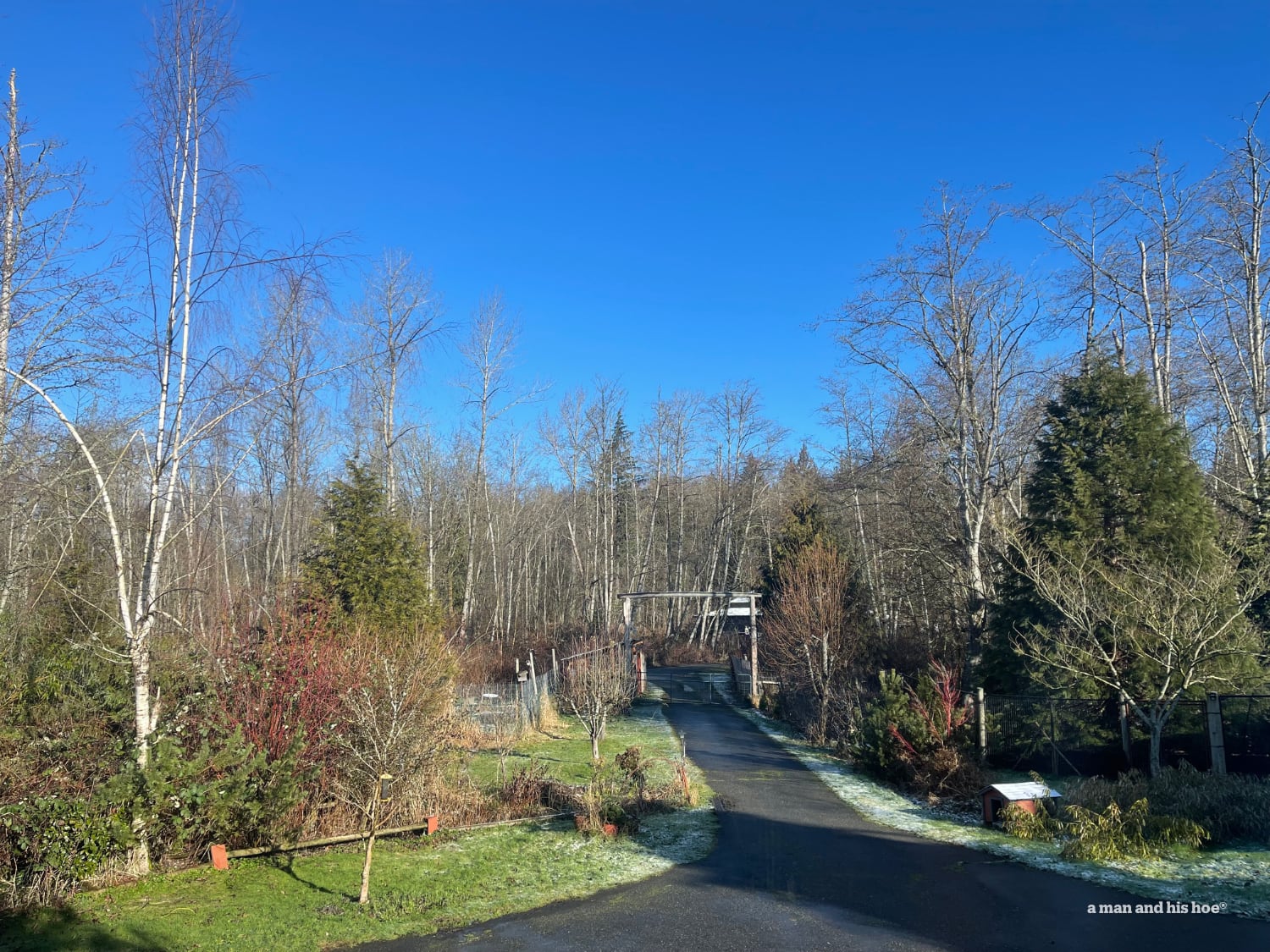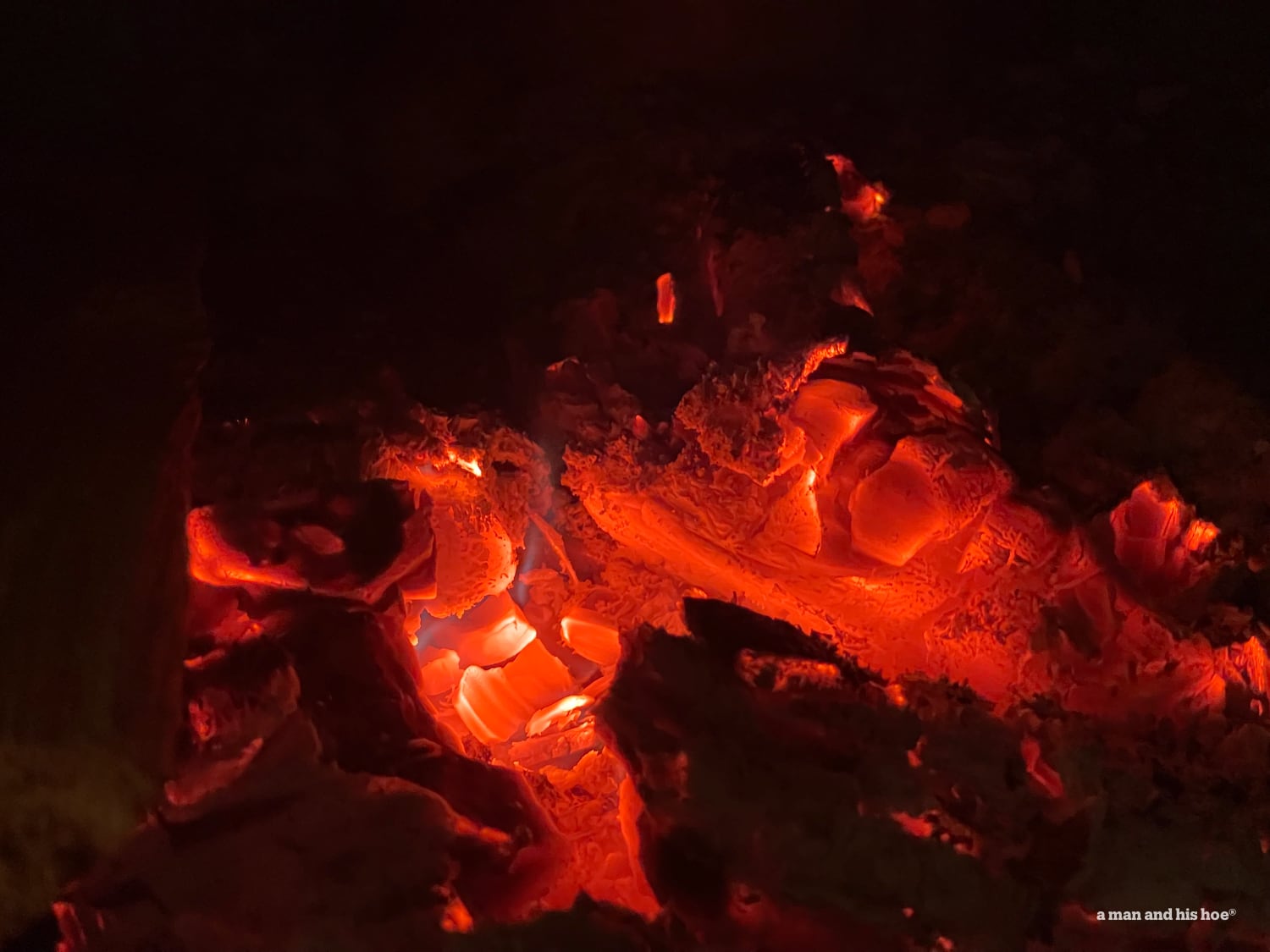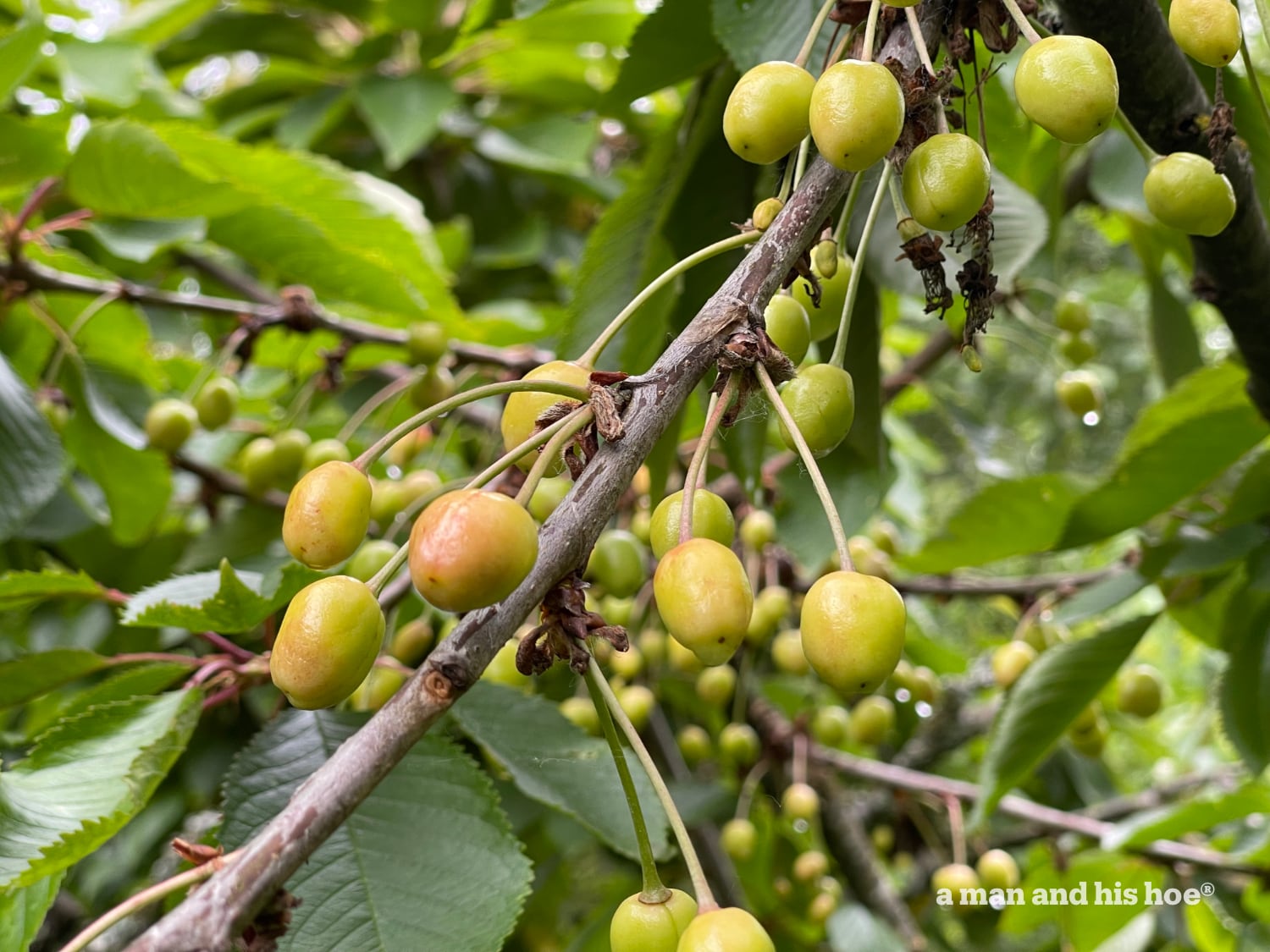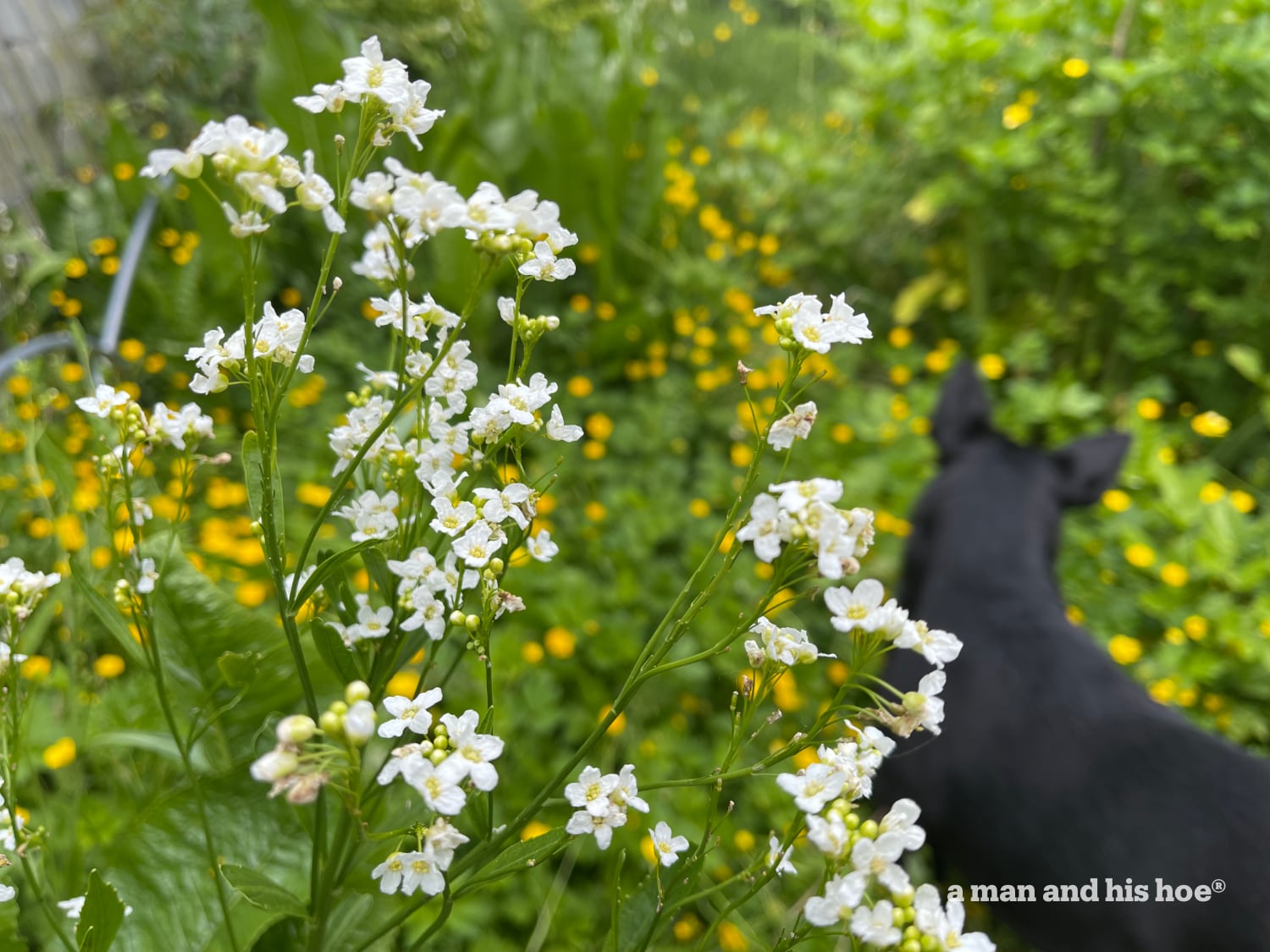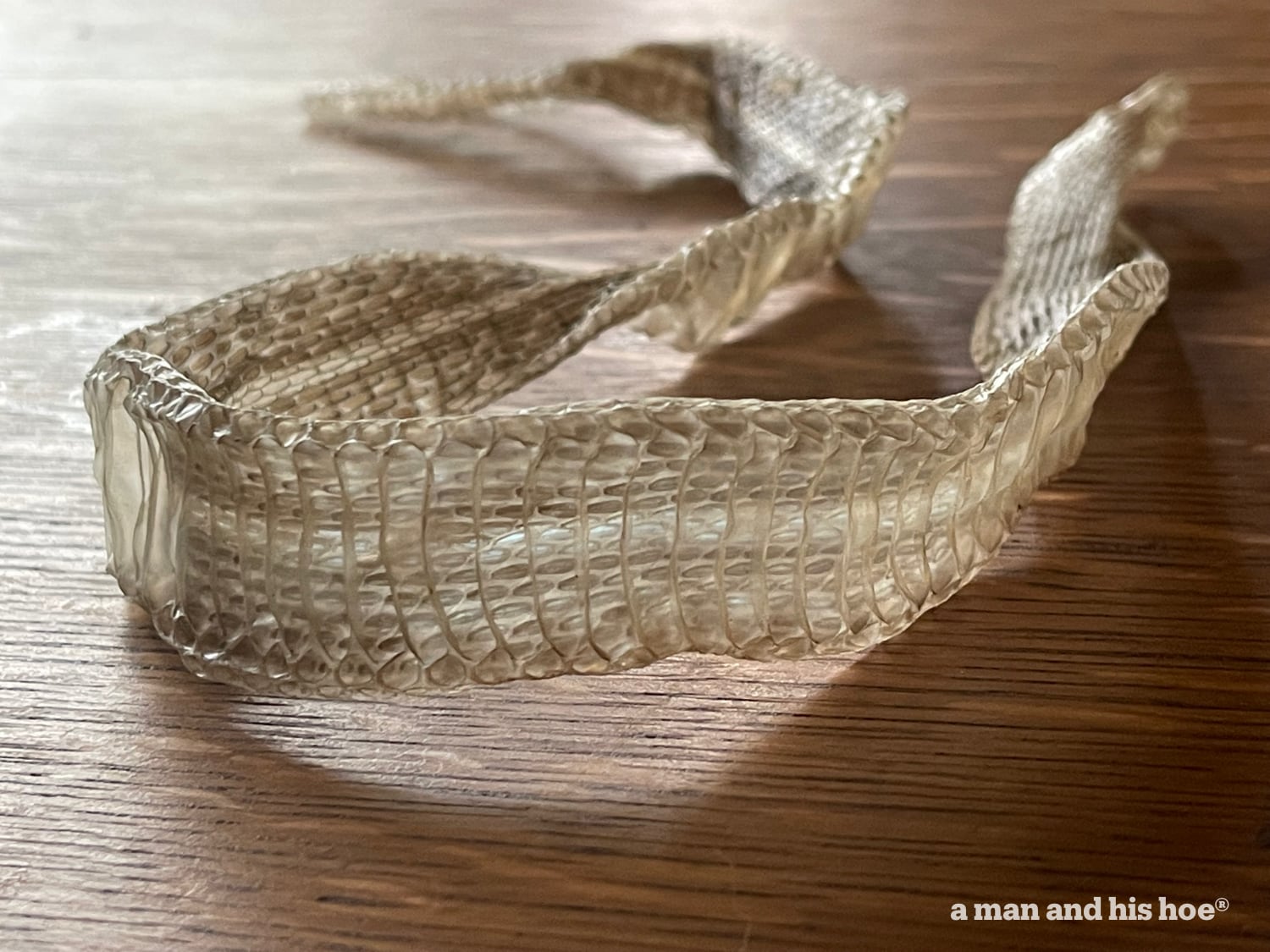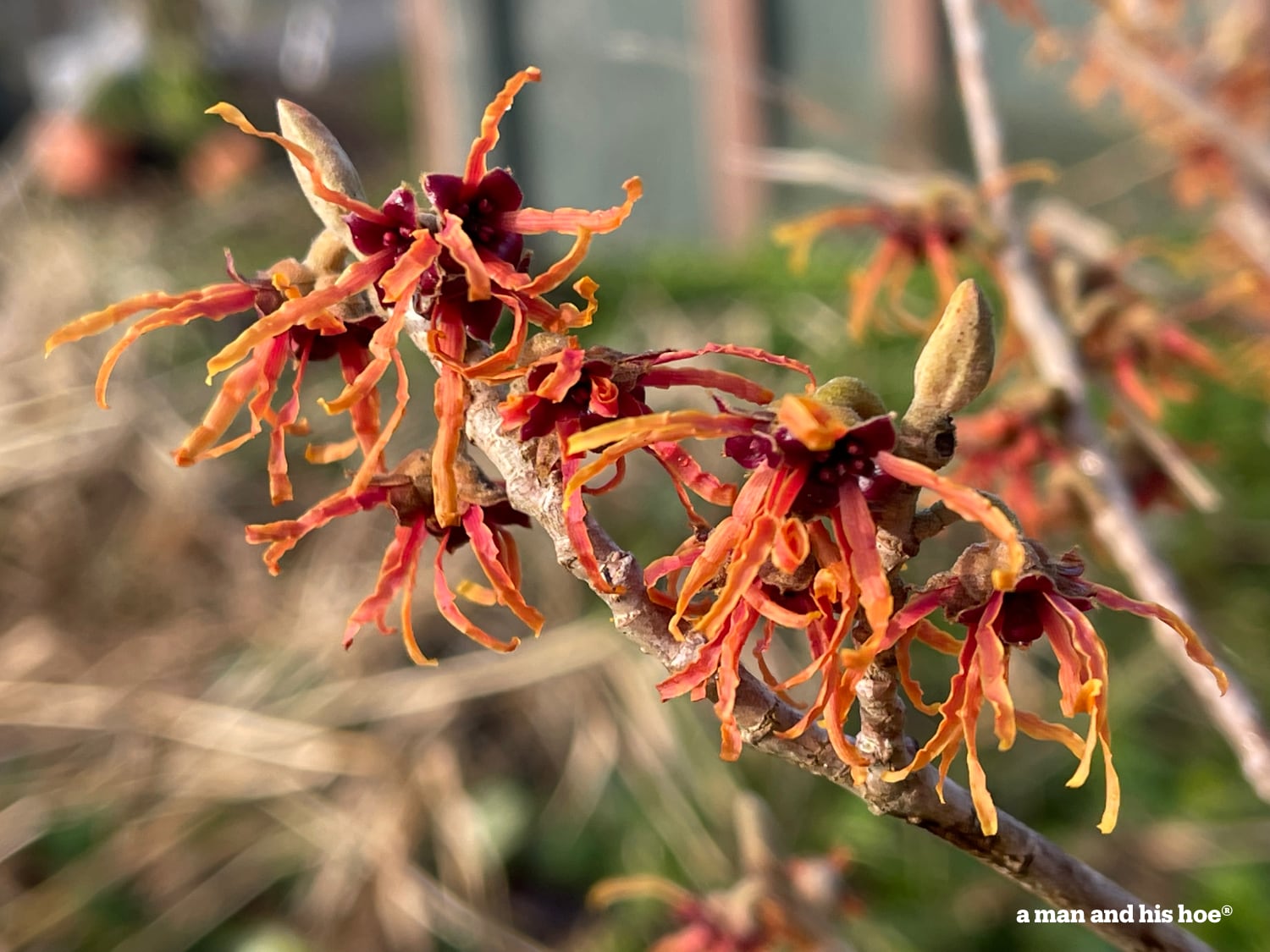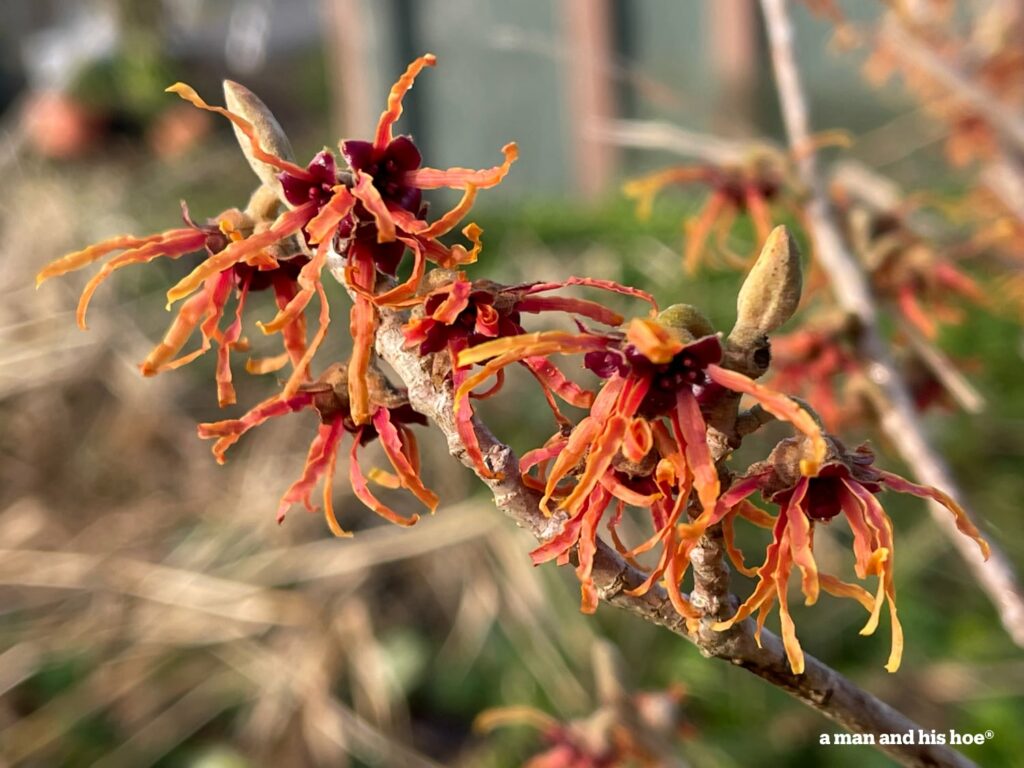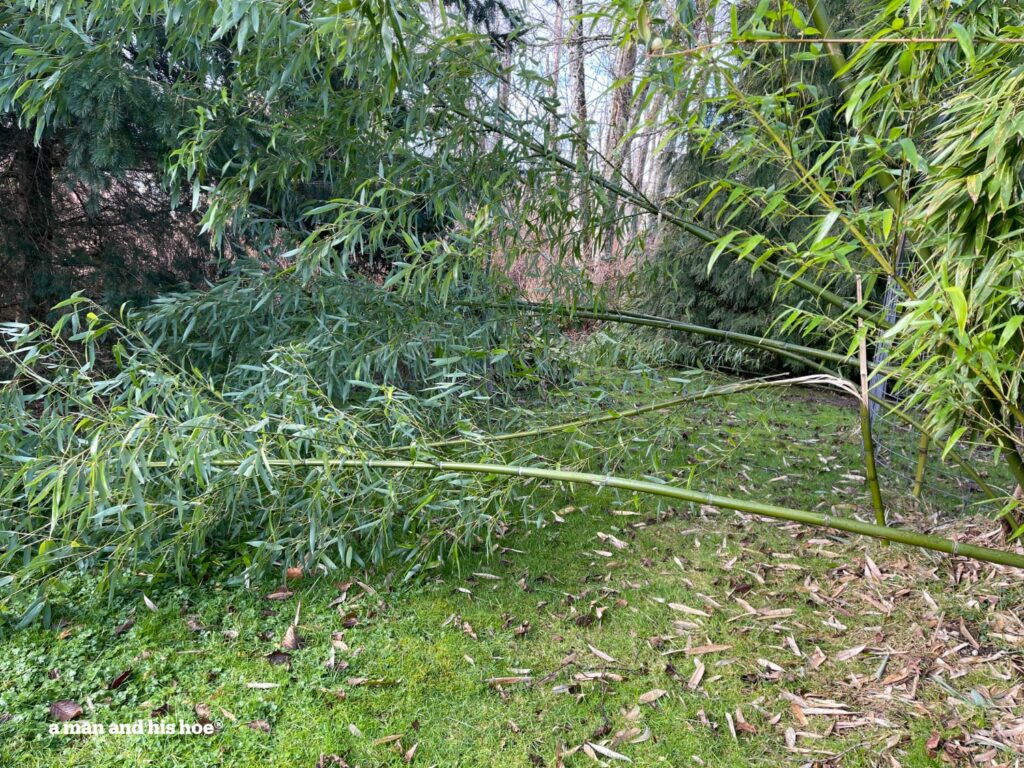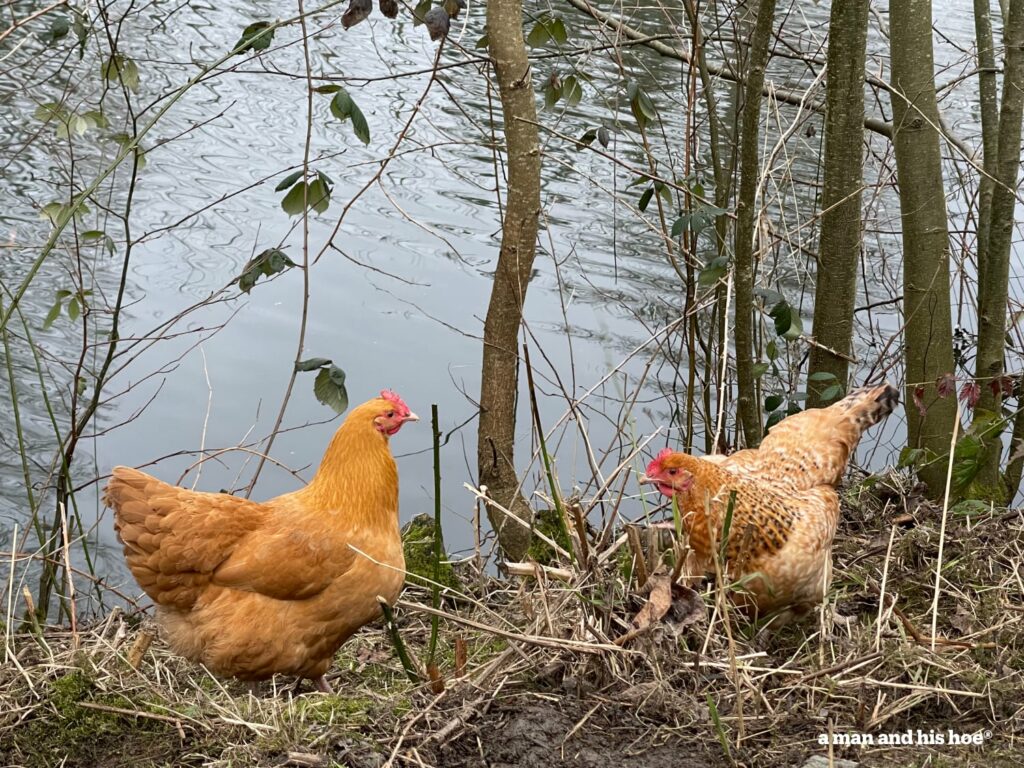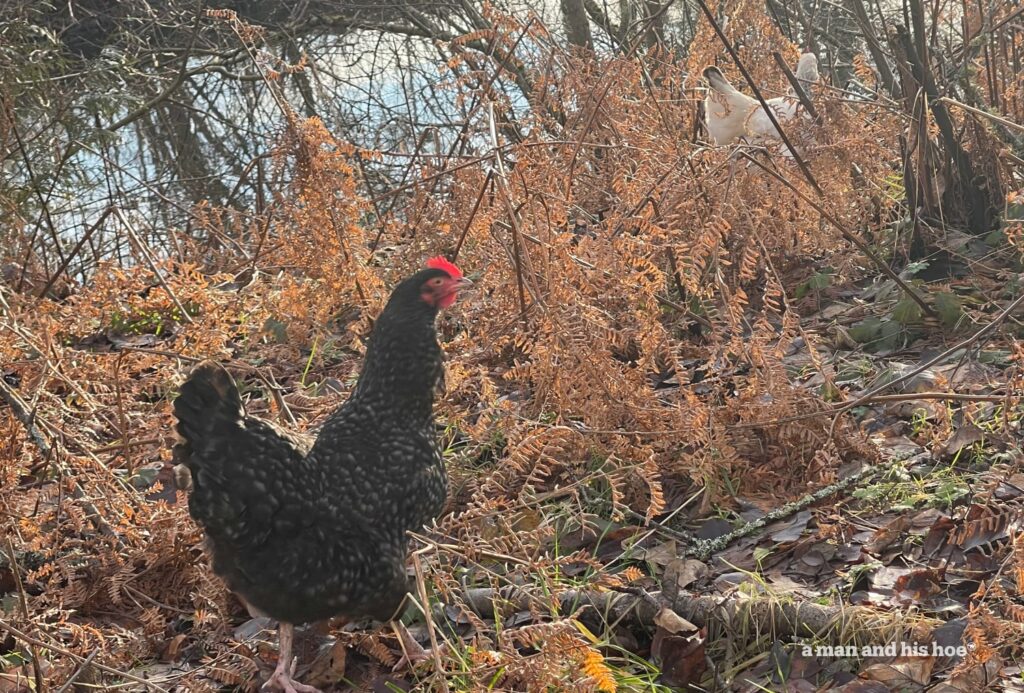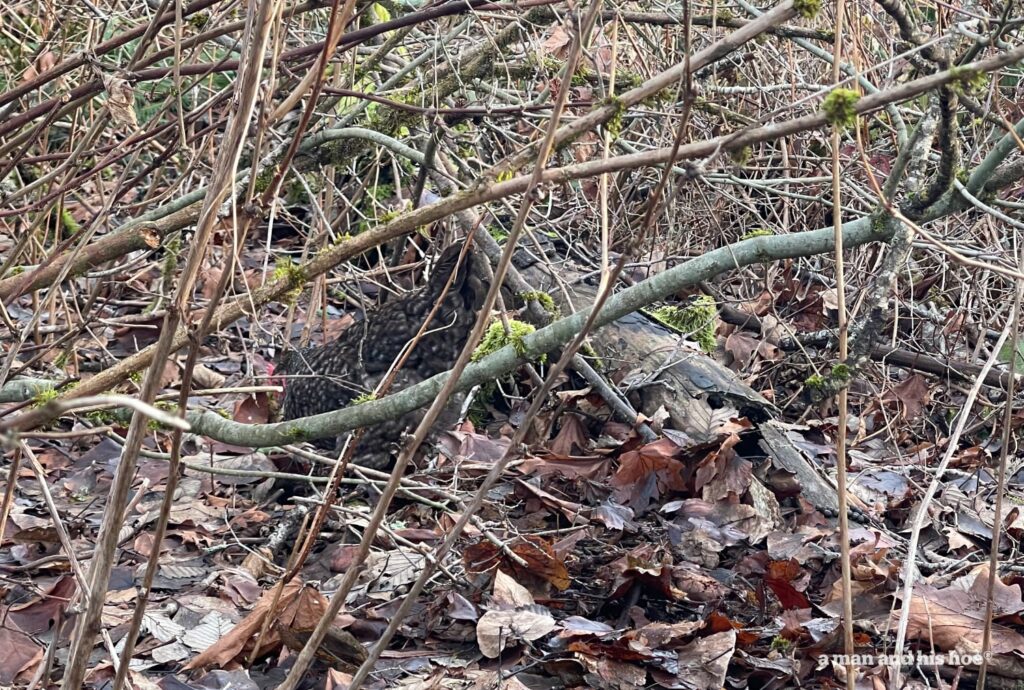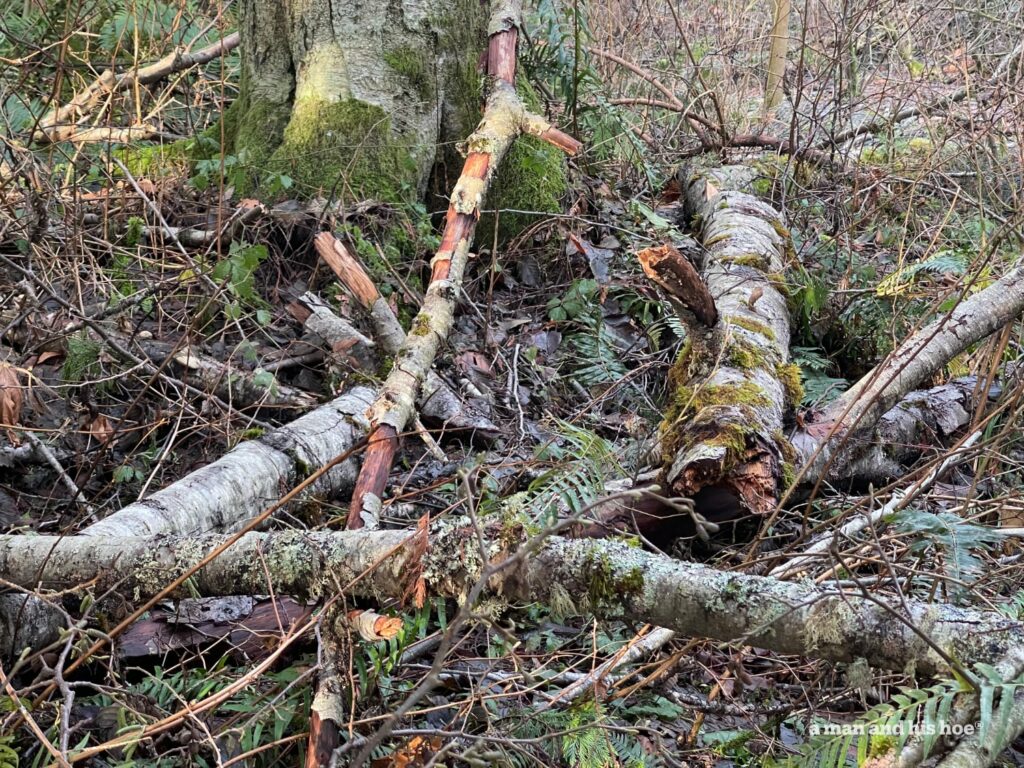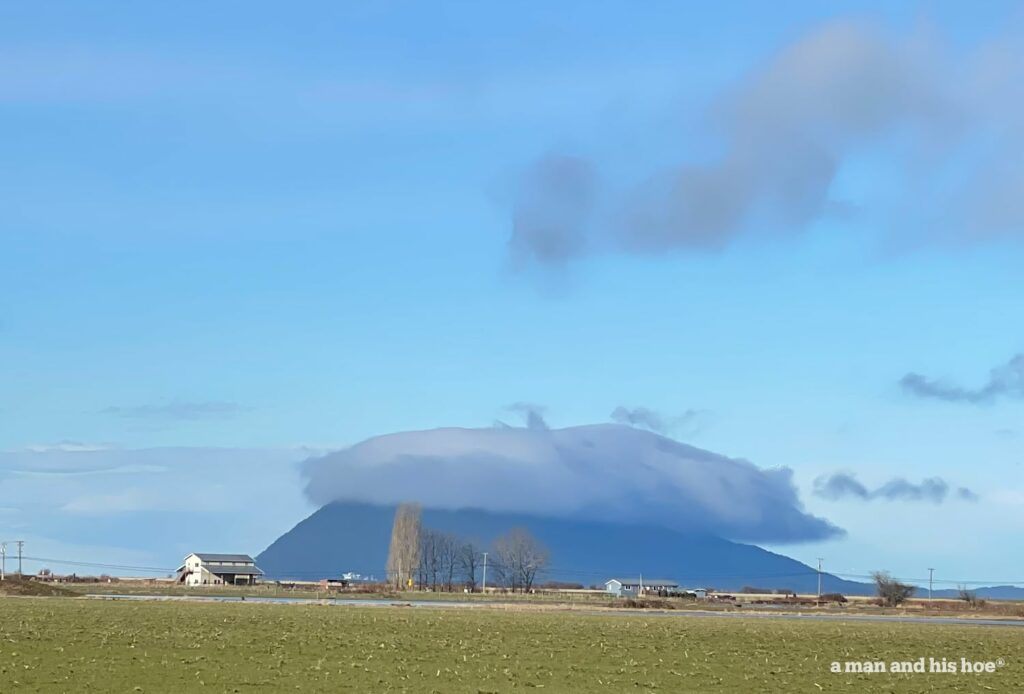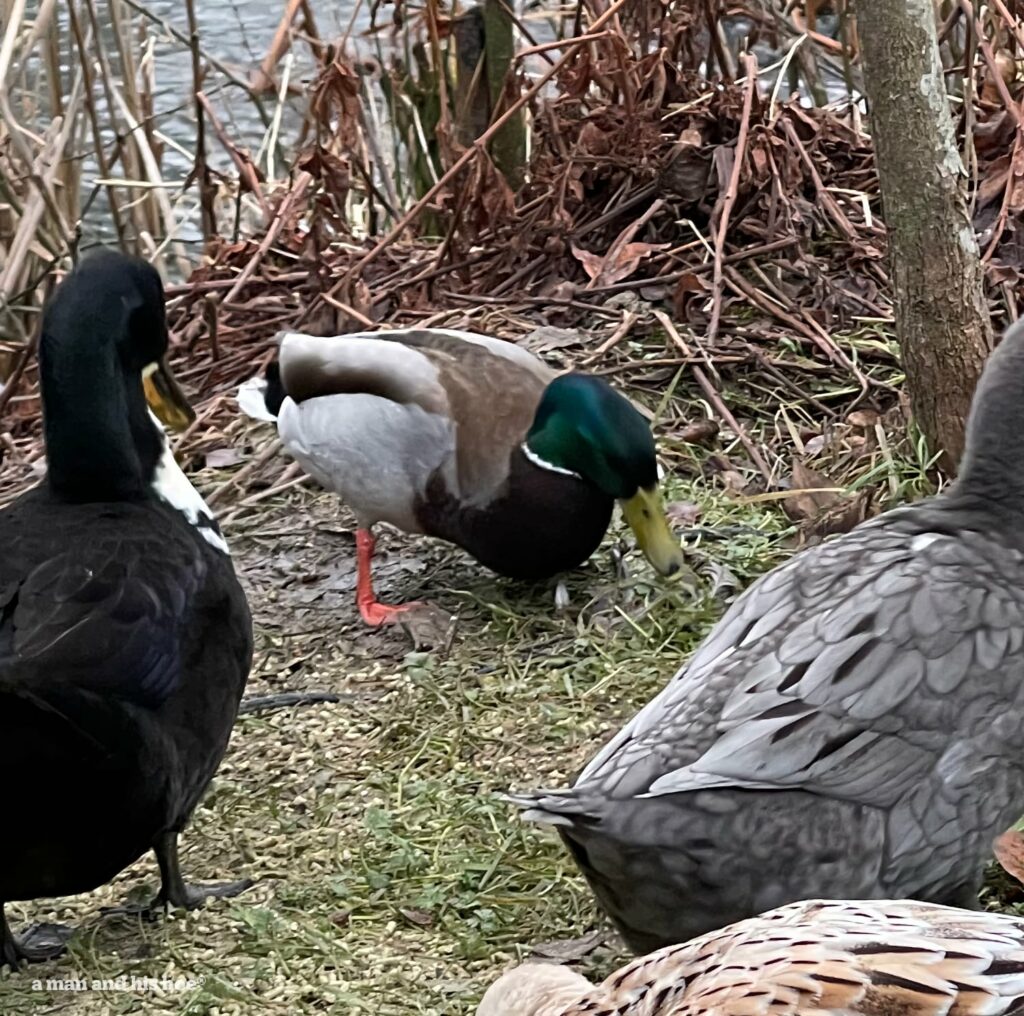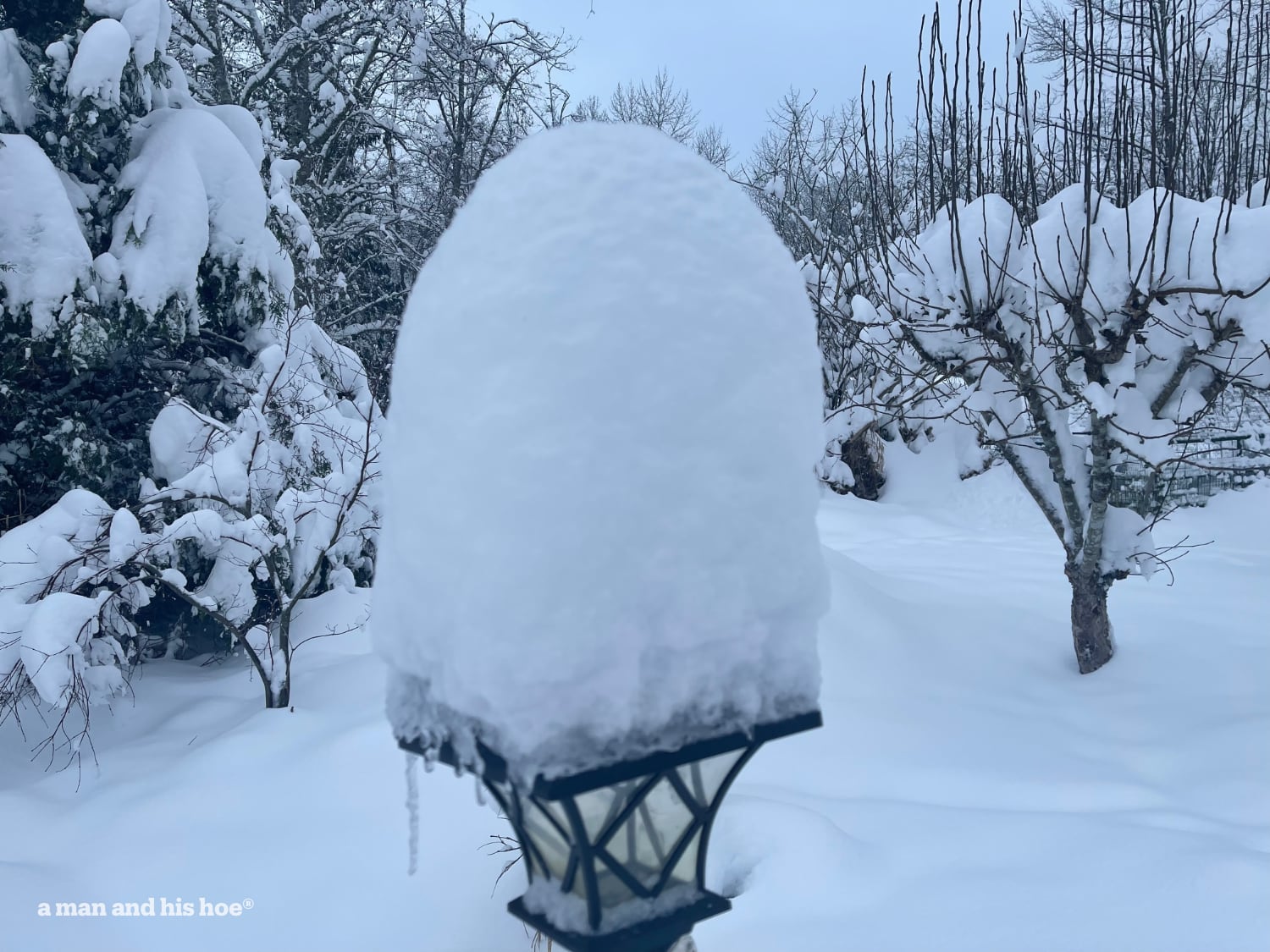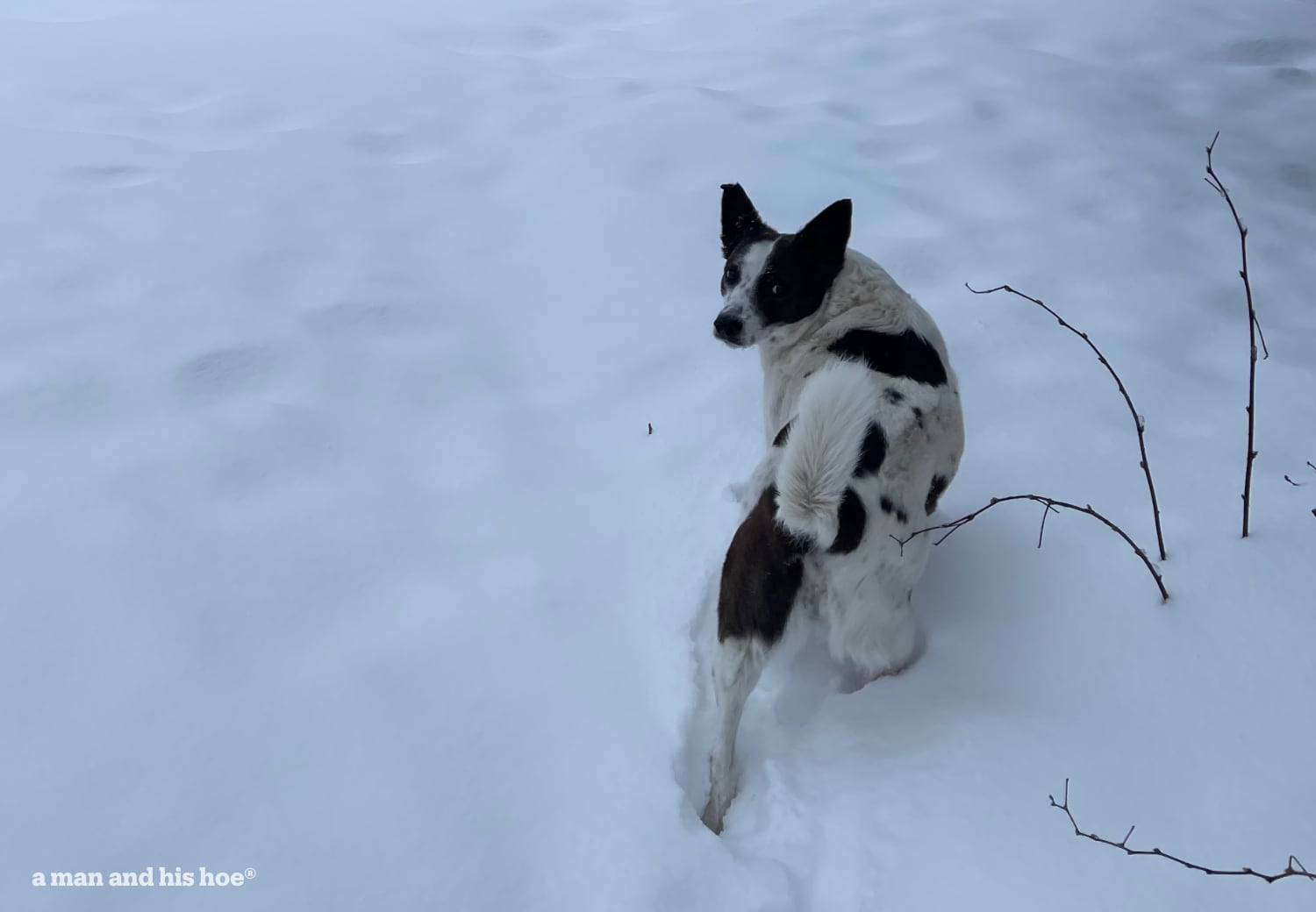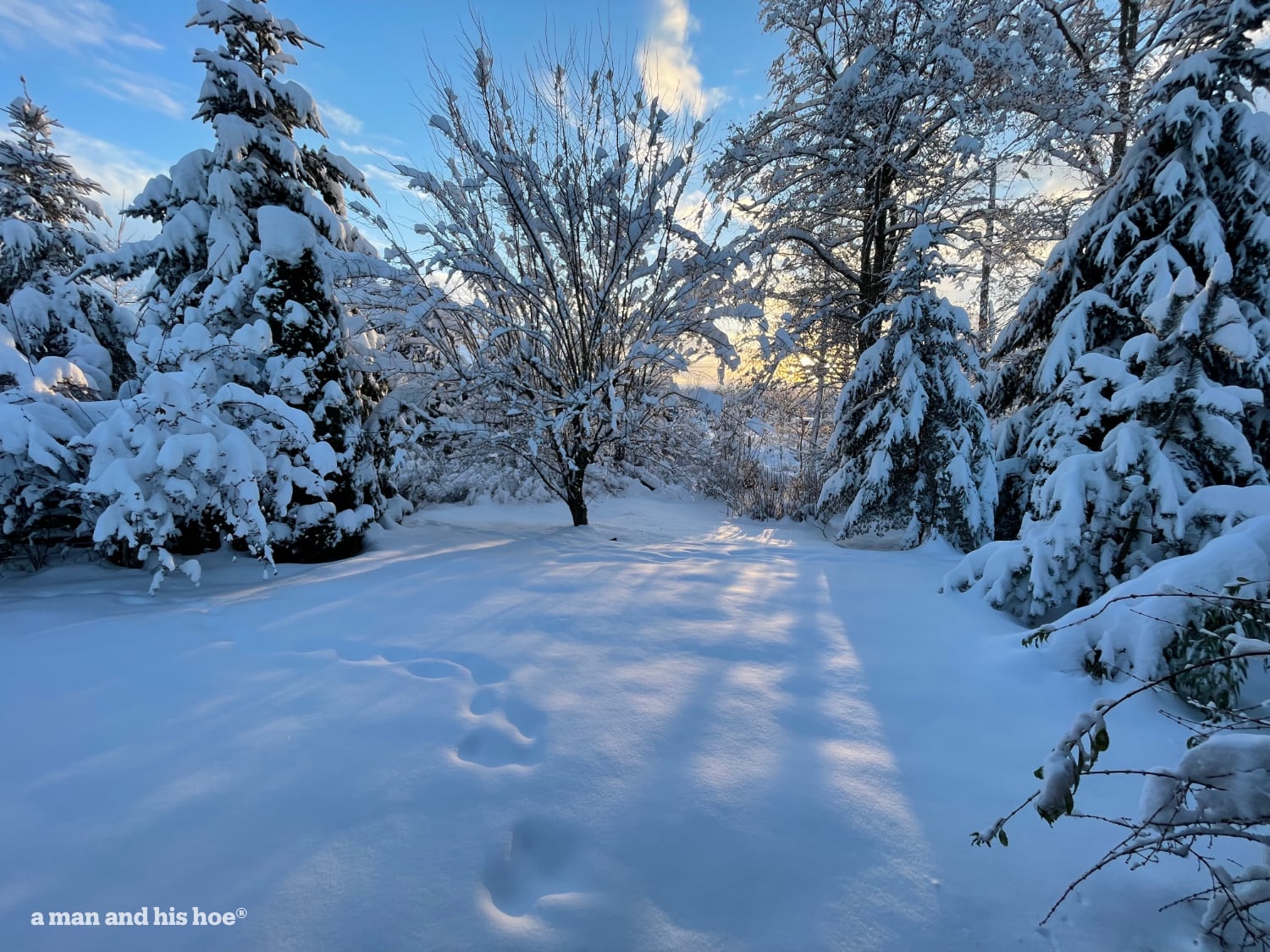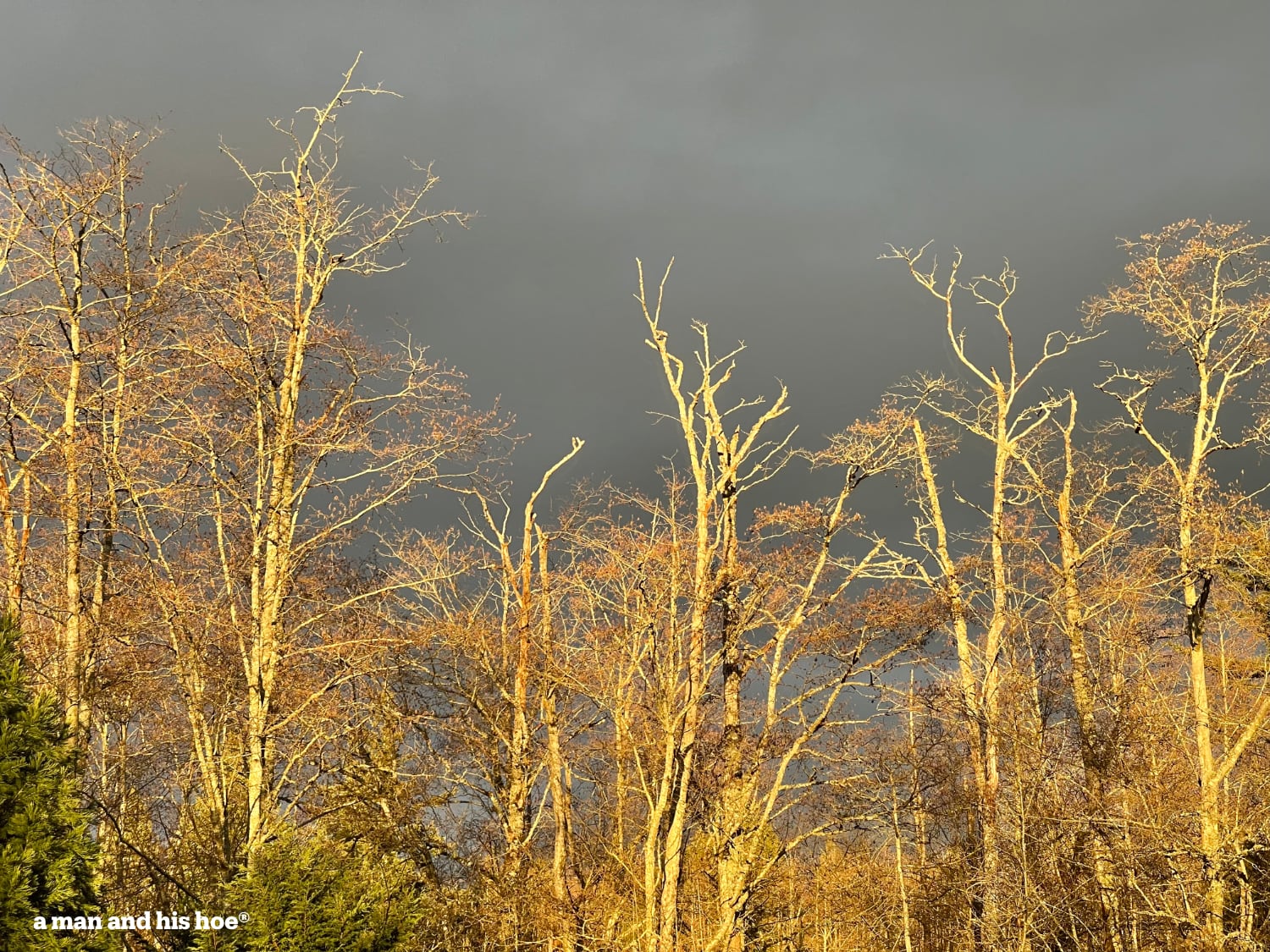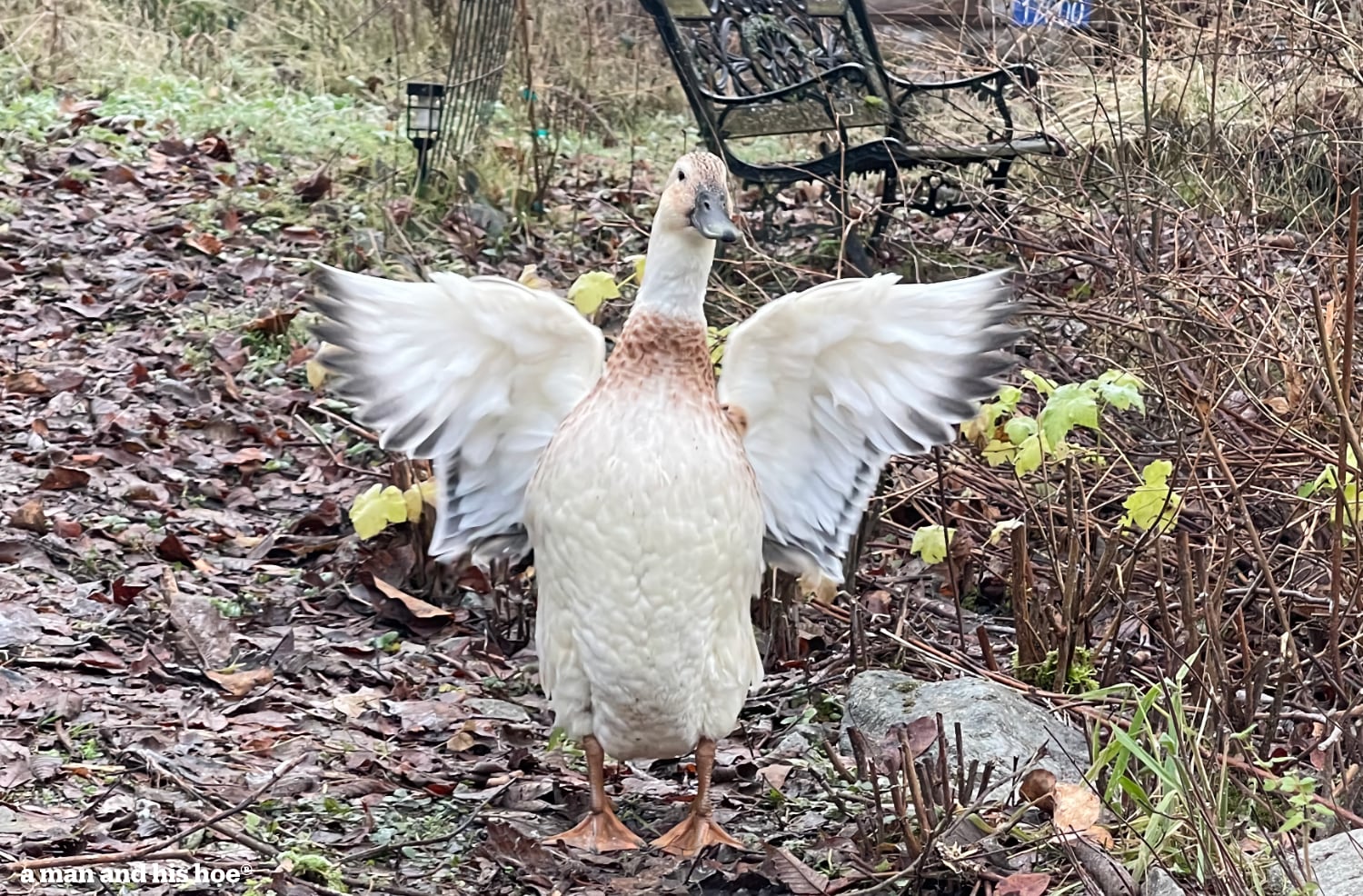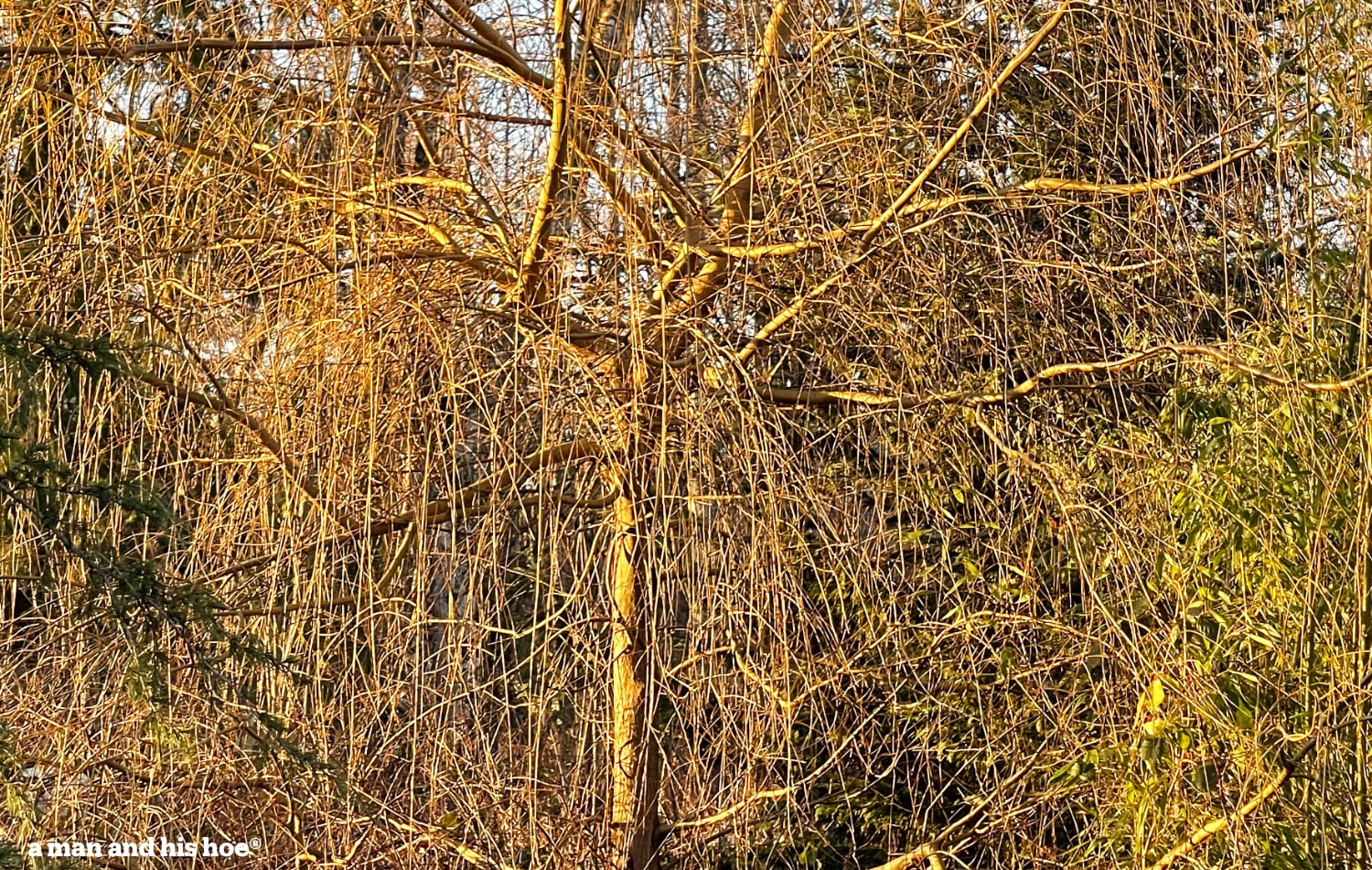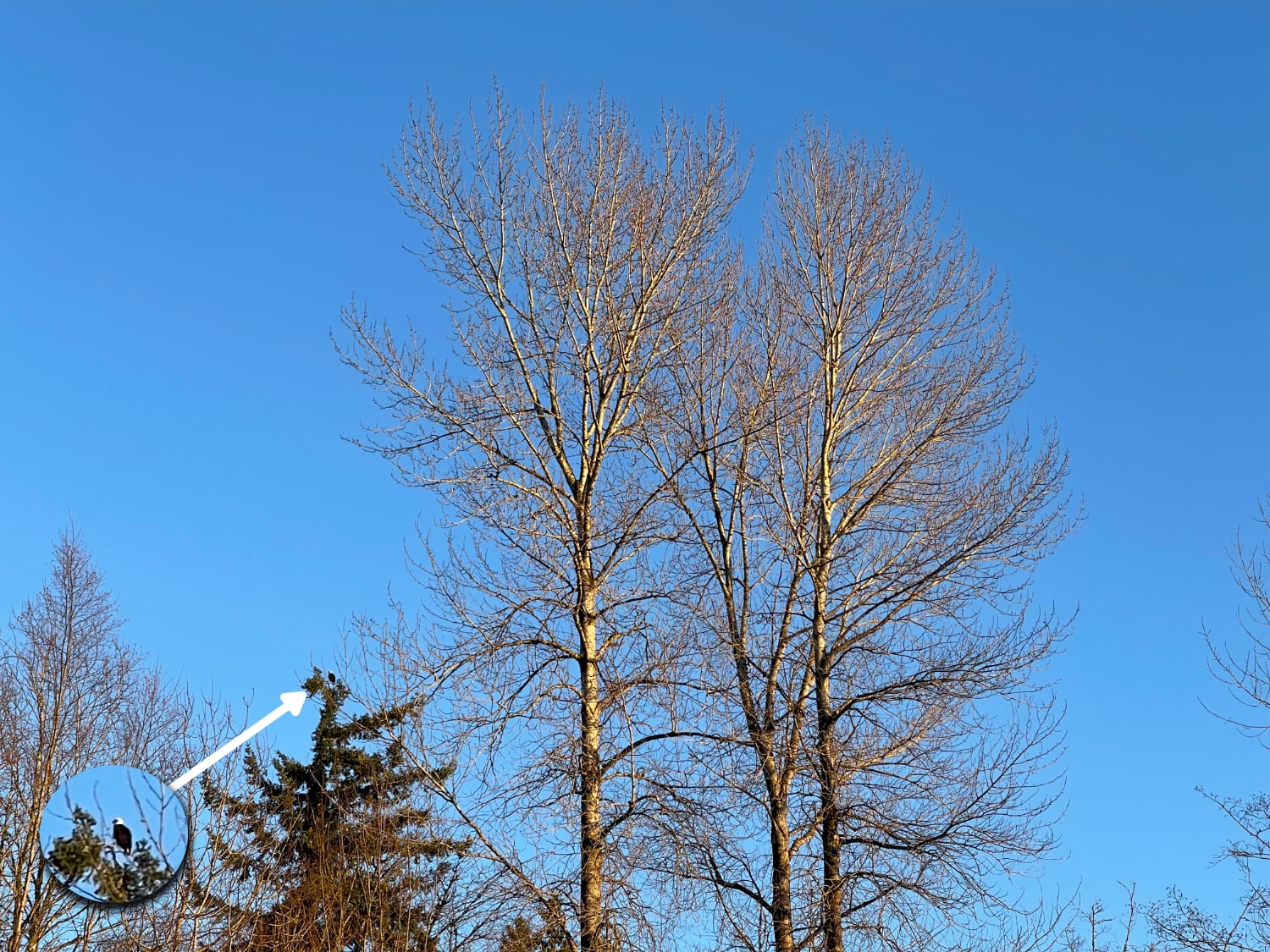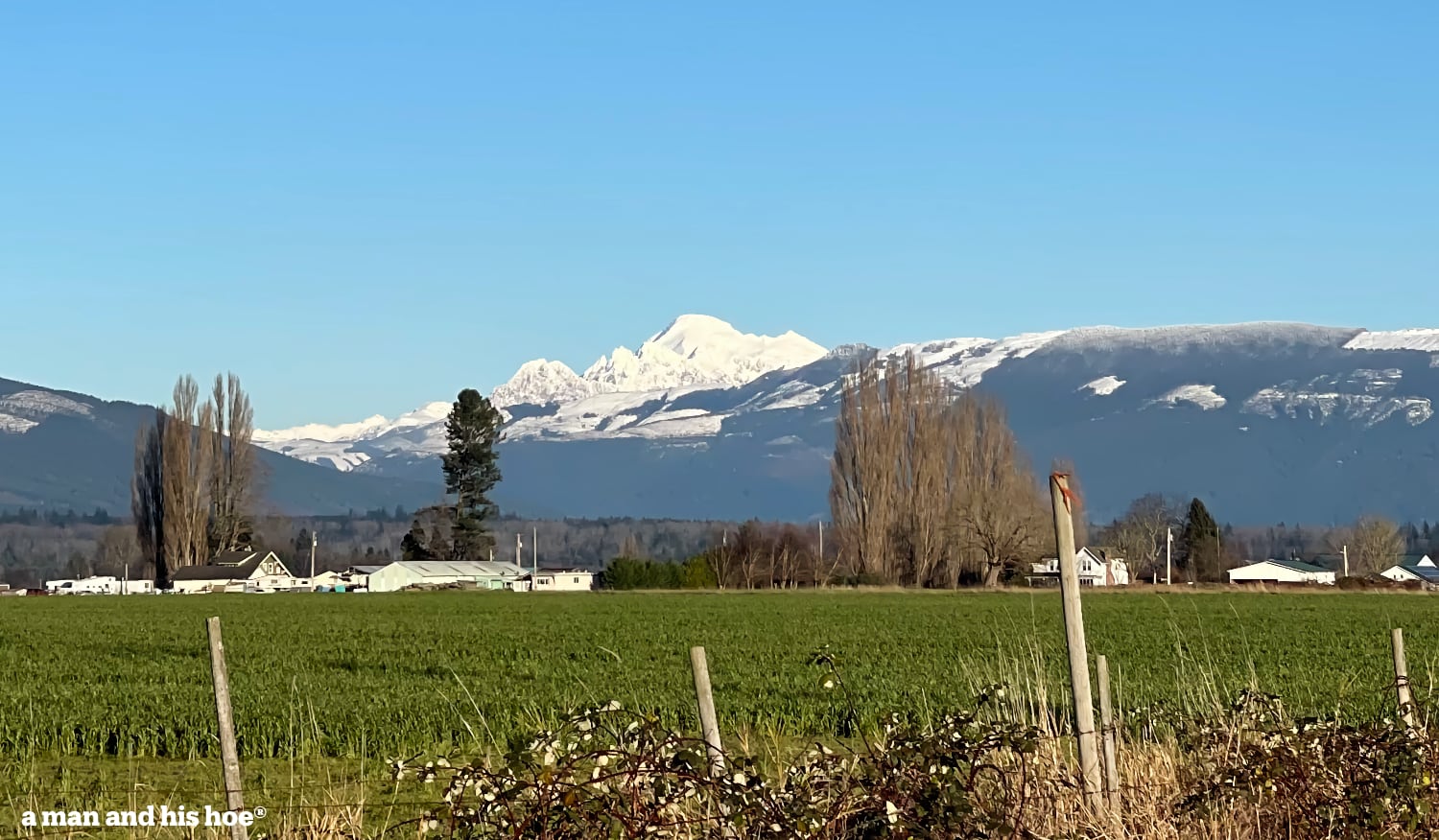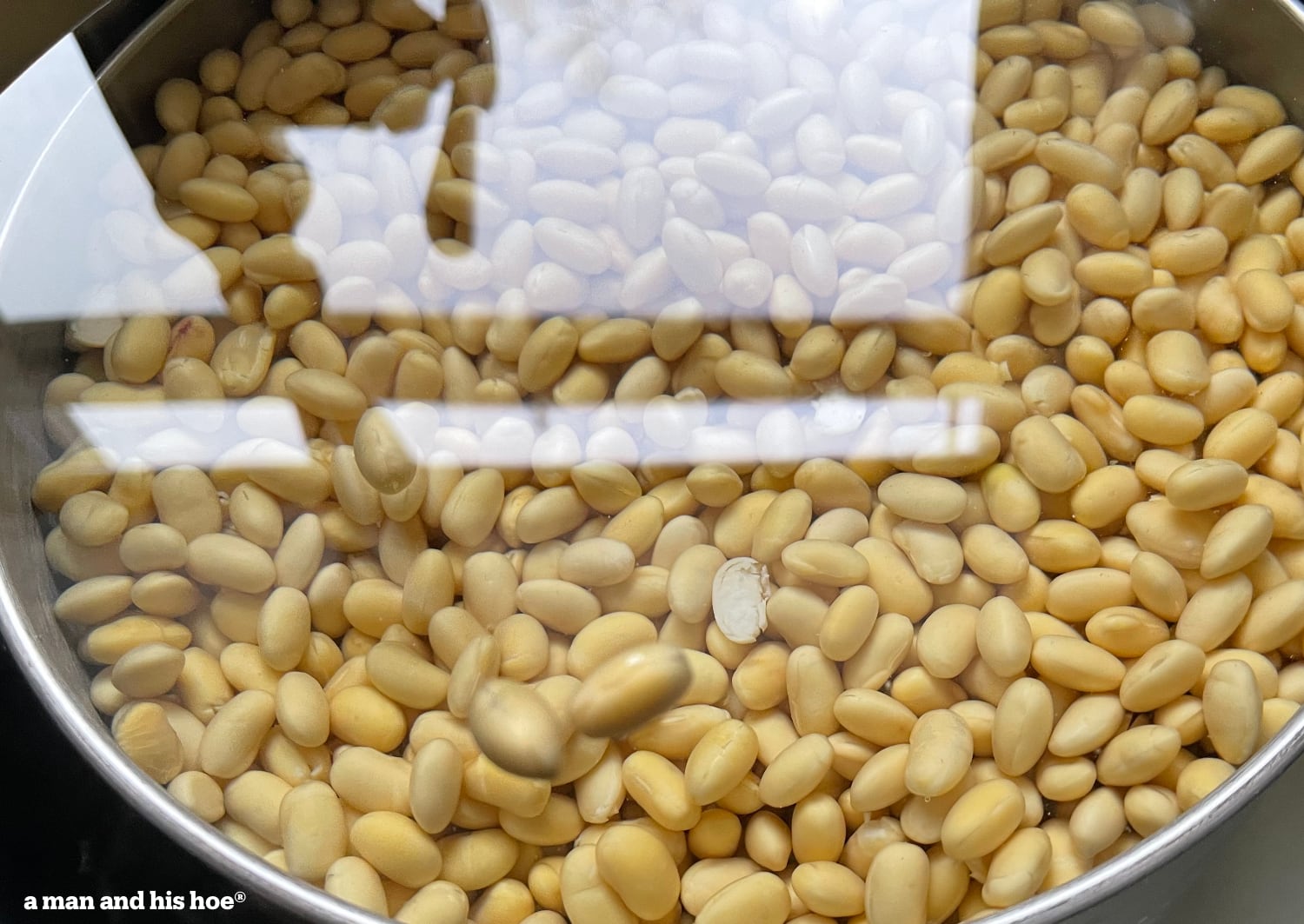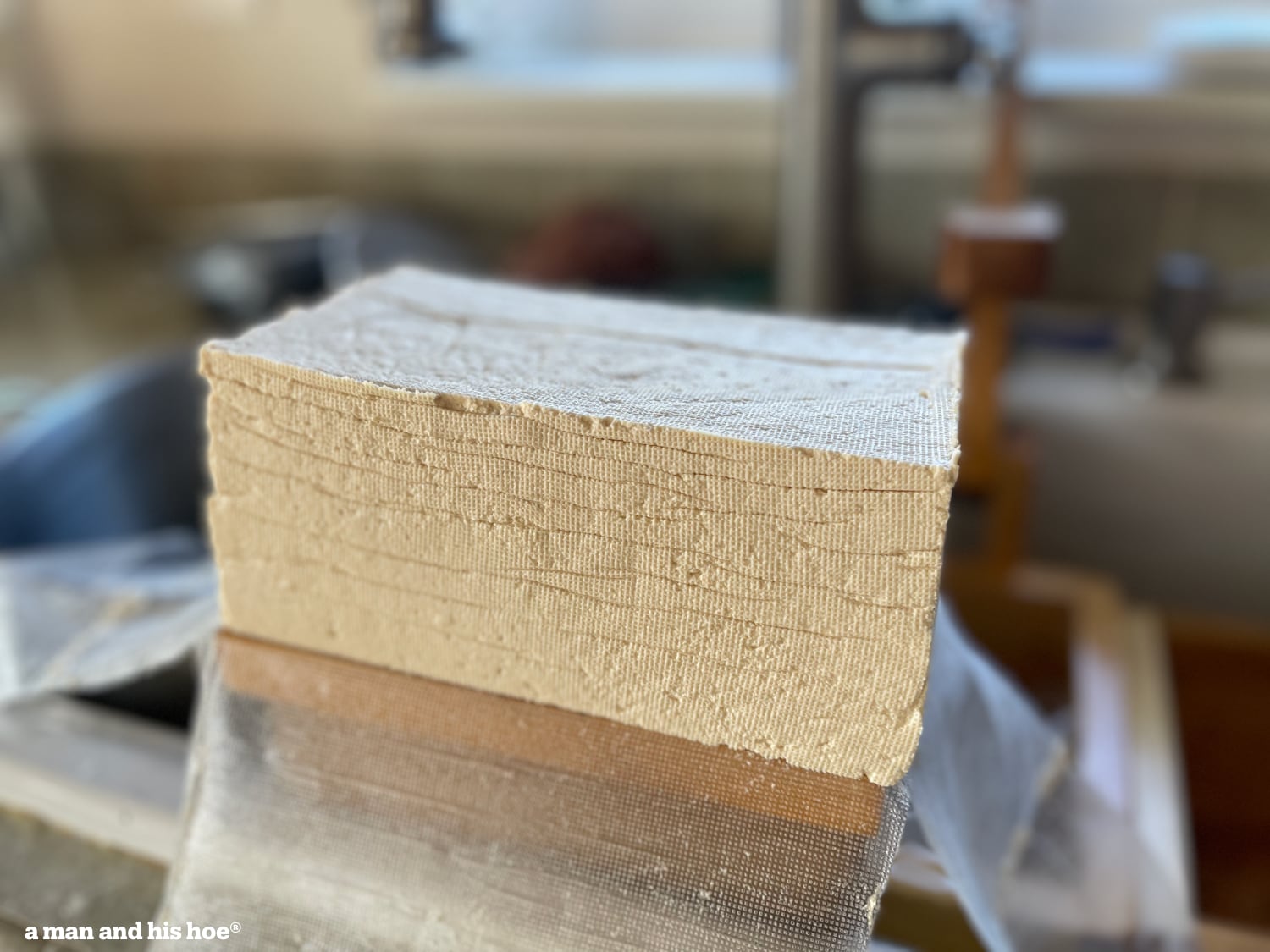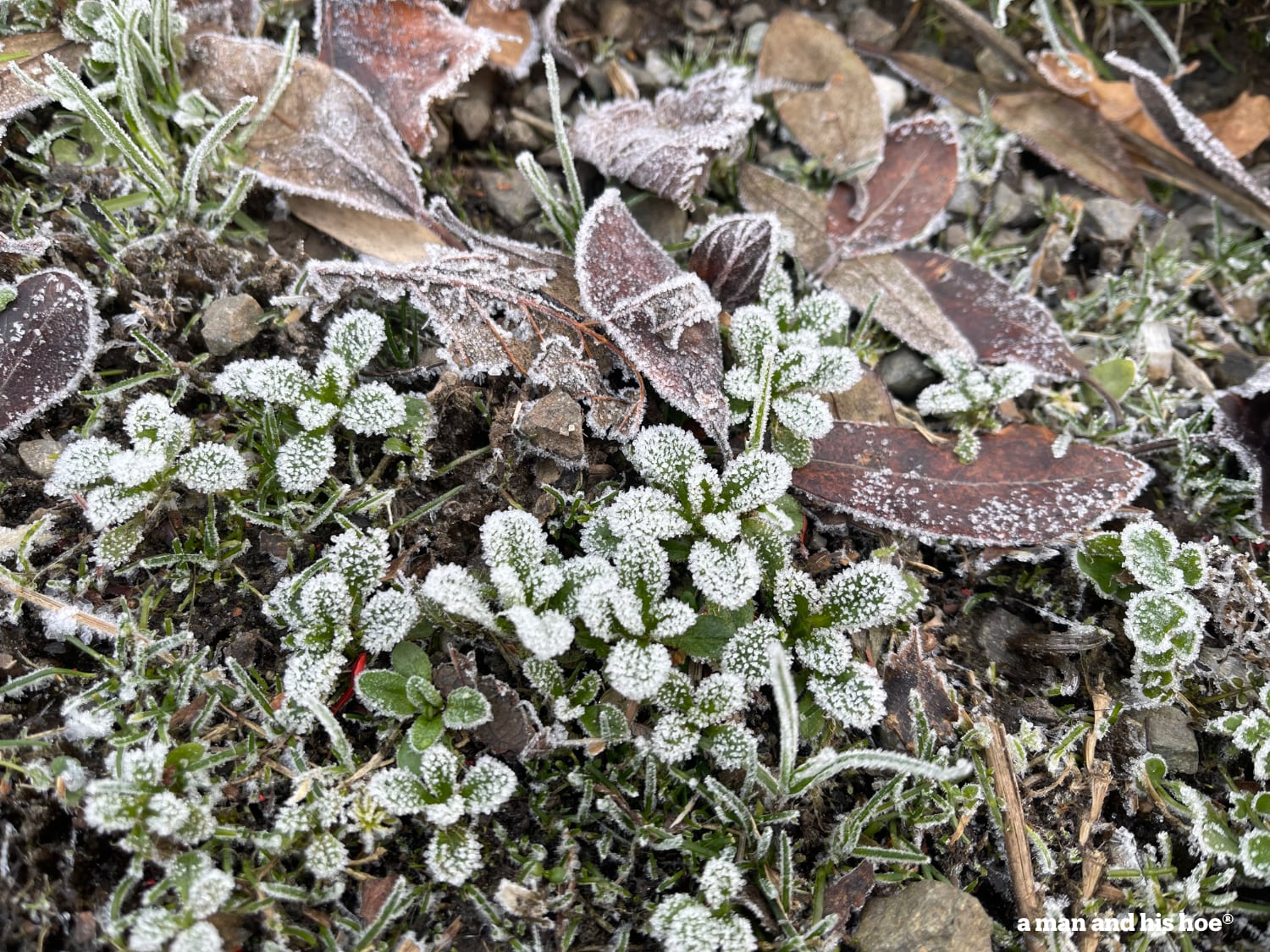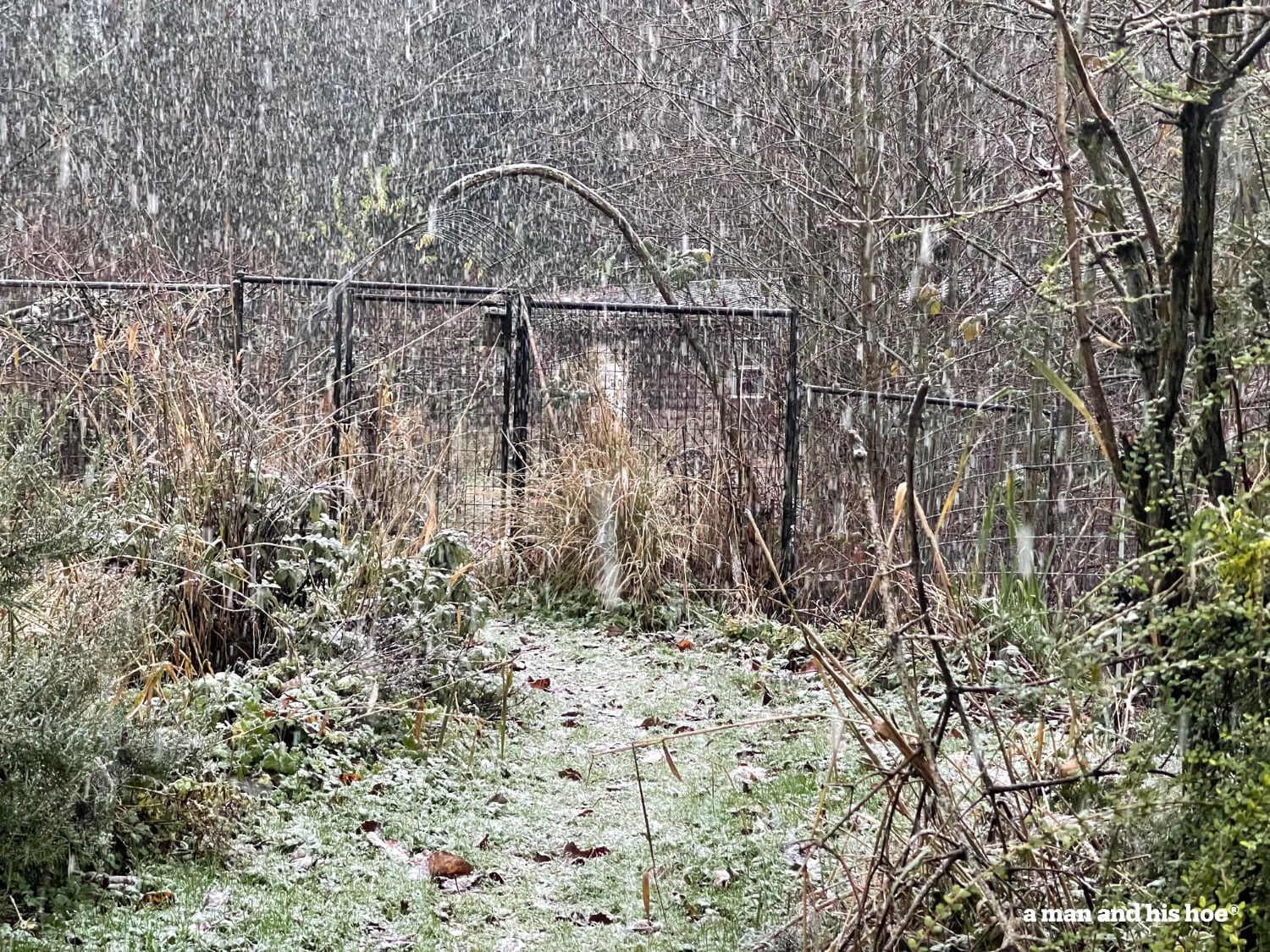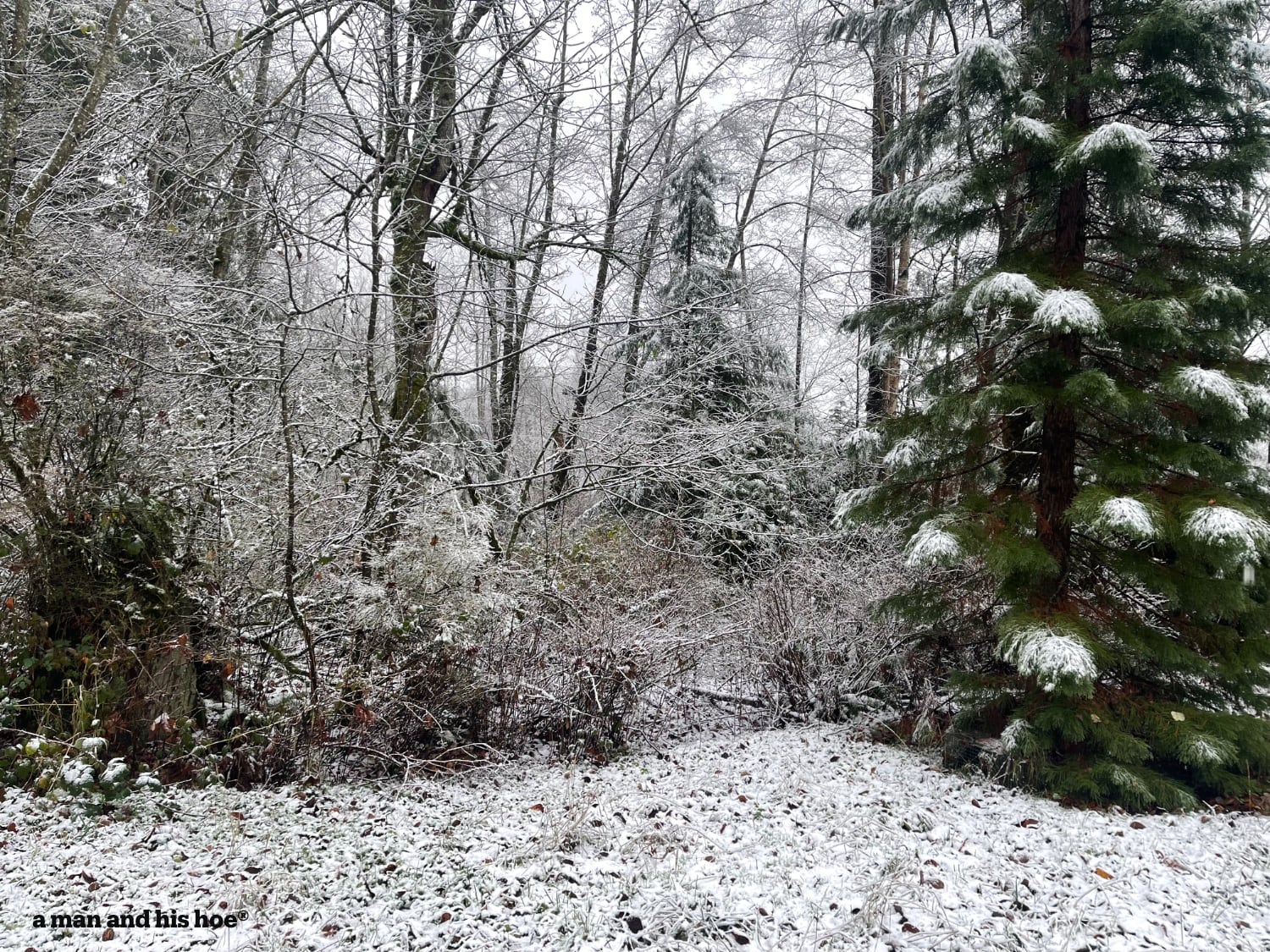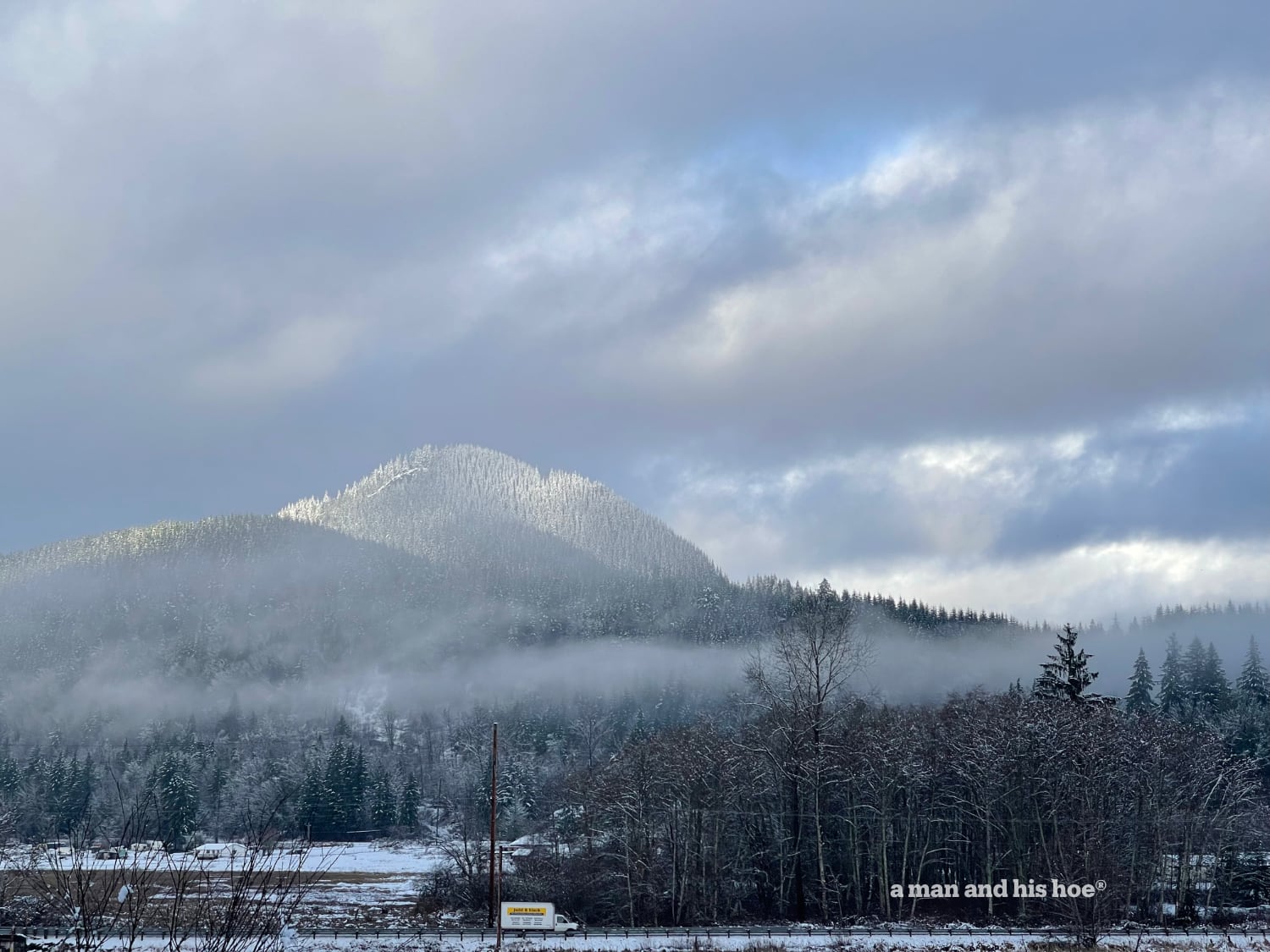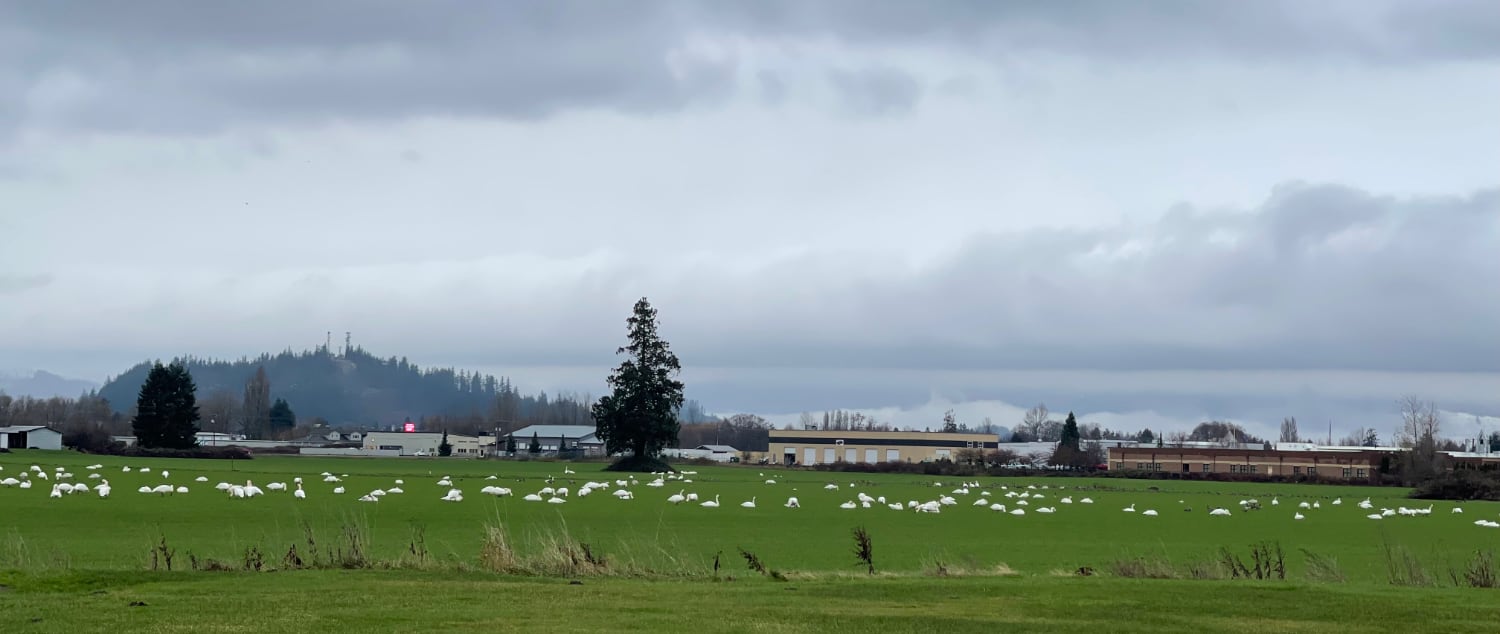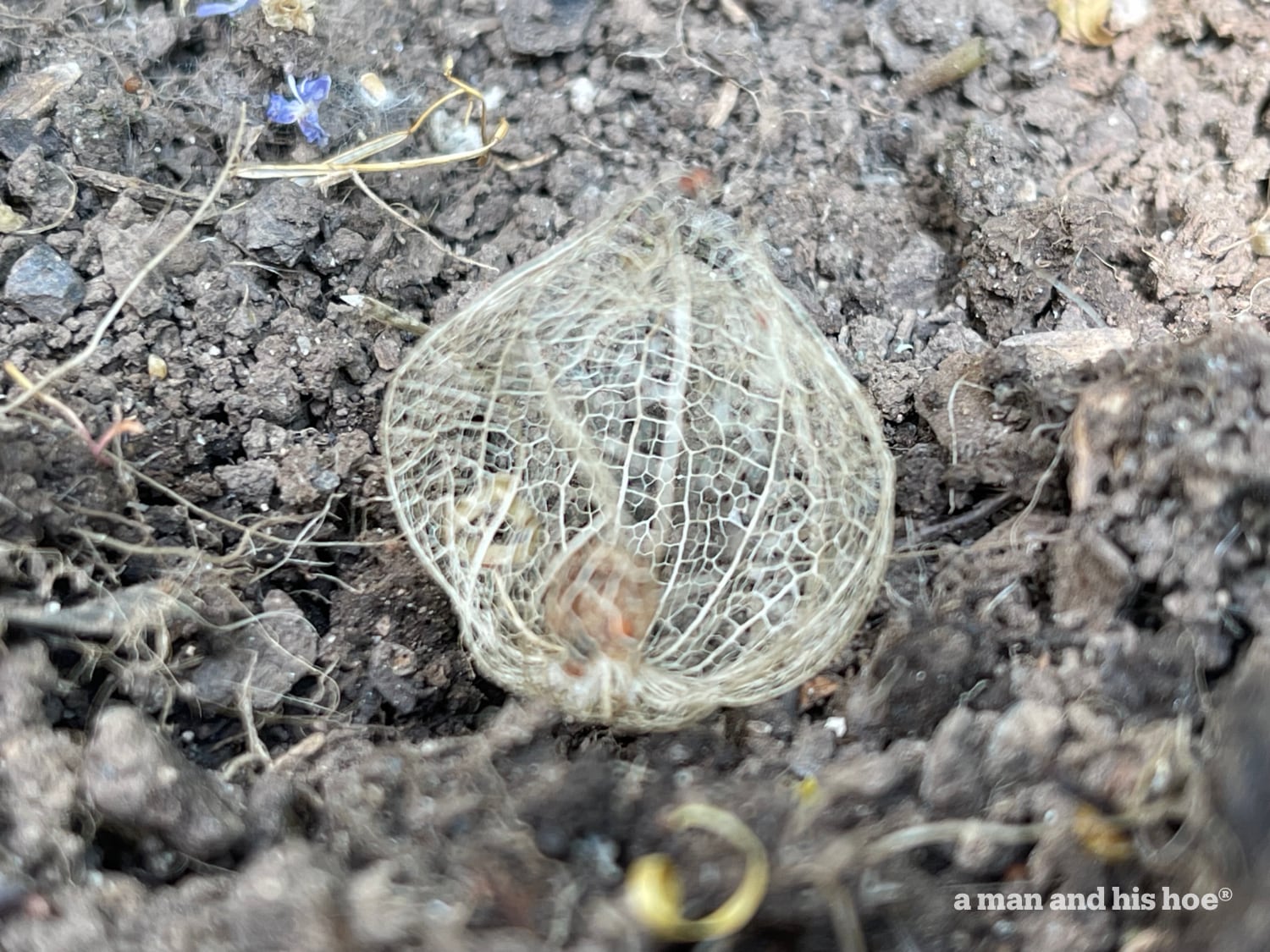
Leave something on the ground and nature will turn it into a work of art. While cleaning out the hoop house to plant tomatoes, I discovered delicate lace spheres. This is what happens if a tomatillo falls to the ground and lays on the ground all winter in a place out of the rain. The fruit dries up. Microbes eat them. The husk dries, microbes eat the soft bits, and all that remains is the delicate, lacy frame.
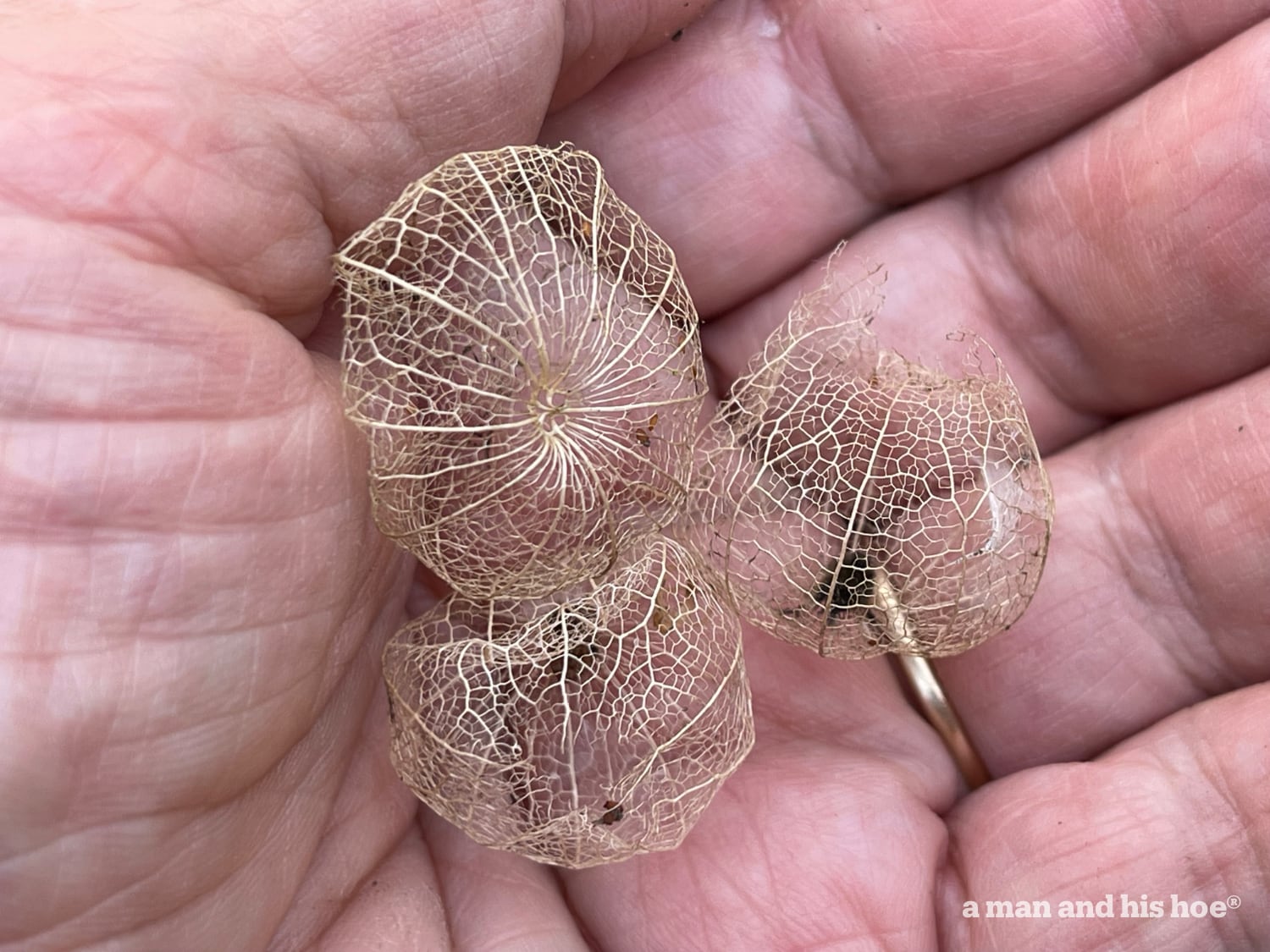
Aren’t they just lovely? I brought a few into the house to use as decoration. How many hours would it take me to weave such delicate mini orbs? How would I go about recreating them? I left most behind without thinking to save them.
But if I plant more tomatillos and at the end of fall let hundreds of little tomatillos fall to the ground, next spring I can gather many of them, string them together, and use them to decorate a Christmas Tree.

Quite the works of art, don’t you think?
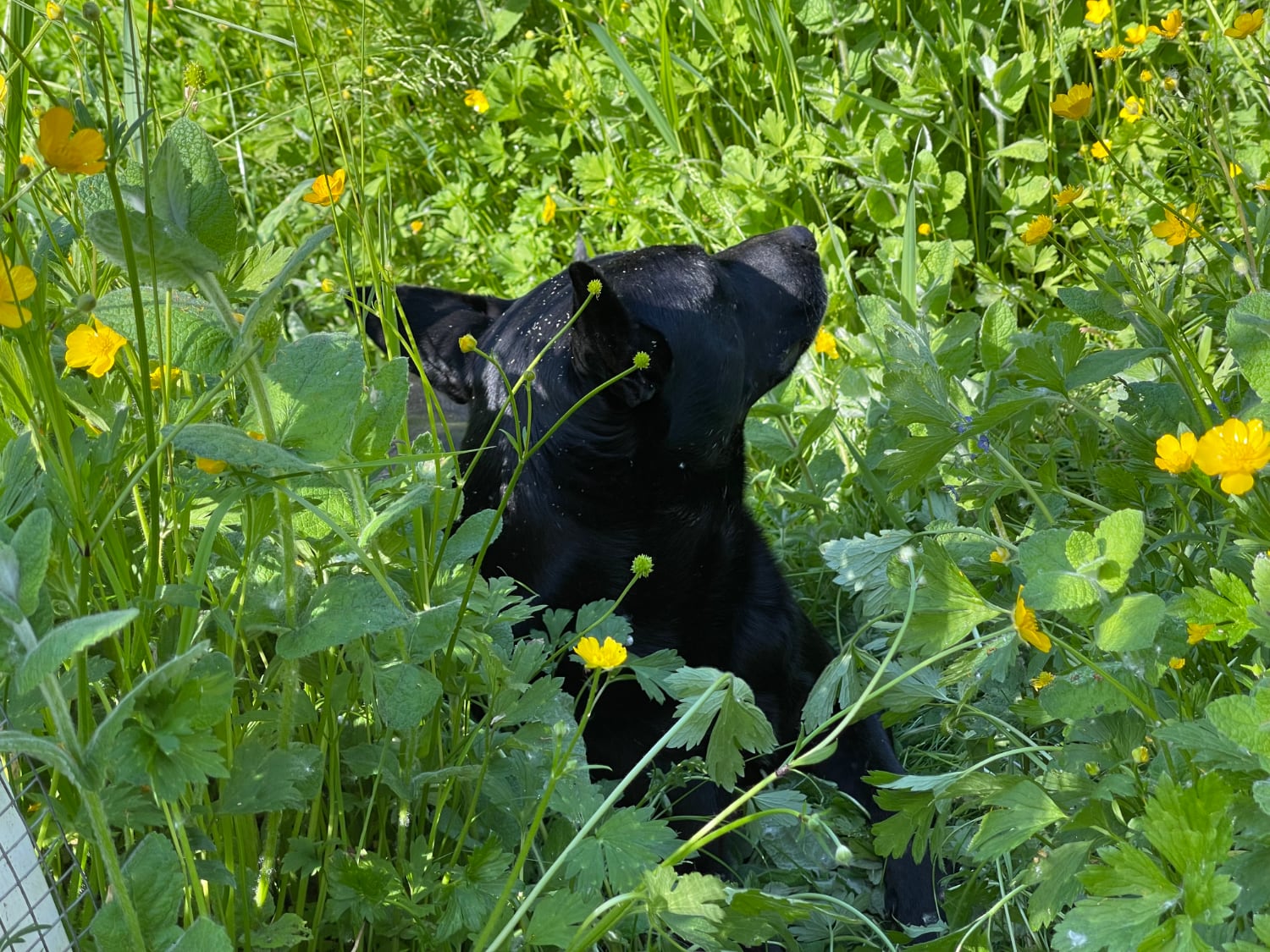
While I cleaned out the hoop house, Taku enjoyed lying in a thick bed of mint. Nearby the Japanese iris are in full bloom. The Japanese name for this variety of iris is Ayame, pronounced Ah – ya – meh.

Happy Ending to Roomba Saga
I need to report that my saga with the bumbling, misbehaving iRobot Roomba i4 is over. Someone read my rant about the Roomba and recommended that I get a Roborock robot vacuum. “The Roborock is smart,” they said. So I ordered one, the midlevel Roborock Q7 Max.
It arrived Wednesday and I put it through its paces. Wow! Yes, this robot vacuum is smart. Equipped with lidar, the Roborock quickly mapped out our floor plan and created a 3d map of all the rooms. It knows how to get around without getting lost. It knows how to vacuum and mop in straight lines. Can go to any room of the house with ease, sliding gracefully between the door jambs to enter any room. You can program the vacuum strength and the amount of water to use for any room. And if you move it for any reason, it spins around, quickly figures out where it is, and proceeds on its merry way. The app for it shows where it is when it is out vacuuming and mopping. So you can see where it has cleaned and where it needs to clean.

You can look at the maps in 2d or 3d.
A big improvement over the Roomba i4 is that as it fills its dustbin, it compacts the dust so the dustbin can carry much more dust and debris than the Roomba i4 which I had to empty frequently as it cleaned. Never once has the Roborock stopped while vacuuming to make me empty the dustbin.
Roomba i4 Goes Merrily Home
More out of kindness than anything, I returned the Roomba i4. There was no need to keep it around and let it suffer the indignity of getting lost so often. No need to watch it whirl down a hallway and try to enter a room a foot too soon and bang into the wall. I felt sorry for it. It tried so hard. Often with confidence it approached a doorway, only to veer into the wall a foot too soon. And devastation clouded its face when it hit the wall instead of gliding through the doorway.
I suggest that you hire a robot therapist if you get a Roomba. It can talk to it after a cleaning job, ask it, “How did it go? … How did that make you feel when you missed the door? … It’s not you, it’s the coders who programmed you … You know, there’s always tomorrow,” and other things to soothe its hurt feelings.
Maybe if I was sadistic, I’d have kept it around and sent it out every so often just to torment it. But that’s not me. It looked relieved when I cleaned it all up, put it back in its box, and sent it on home. Perhaps it was just a delusion, but I thought it said with joy, “I’m going home? Yeah!”
I’m sure it’s very happy it made it back to iRobot in one piece. Other owners may have sent it back in pieces or riddled with bullet holes.
Maybe the next owner of the Roomba i4 will have a simple, one room, square apartment with no furniture that it can clean without much effort. I can only hope it finds a simple home where it can experience success.
Comcast Troubles
And speaking of success and failures, I had to remove readers with @comcast.net email addresses. Someone with a @comcast.net email marked one of my new post emails as spam and now Comcast is blocking everyone with a @comcast.net email from receiving any of my new post emails. If you have a @comcast.net email and want to keep receiving these posts, subscribe again without using a @comcast.net email.
